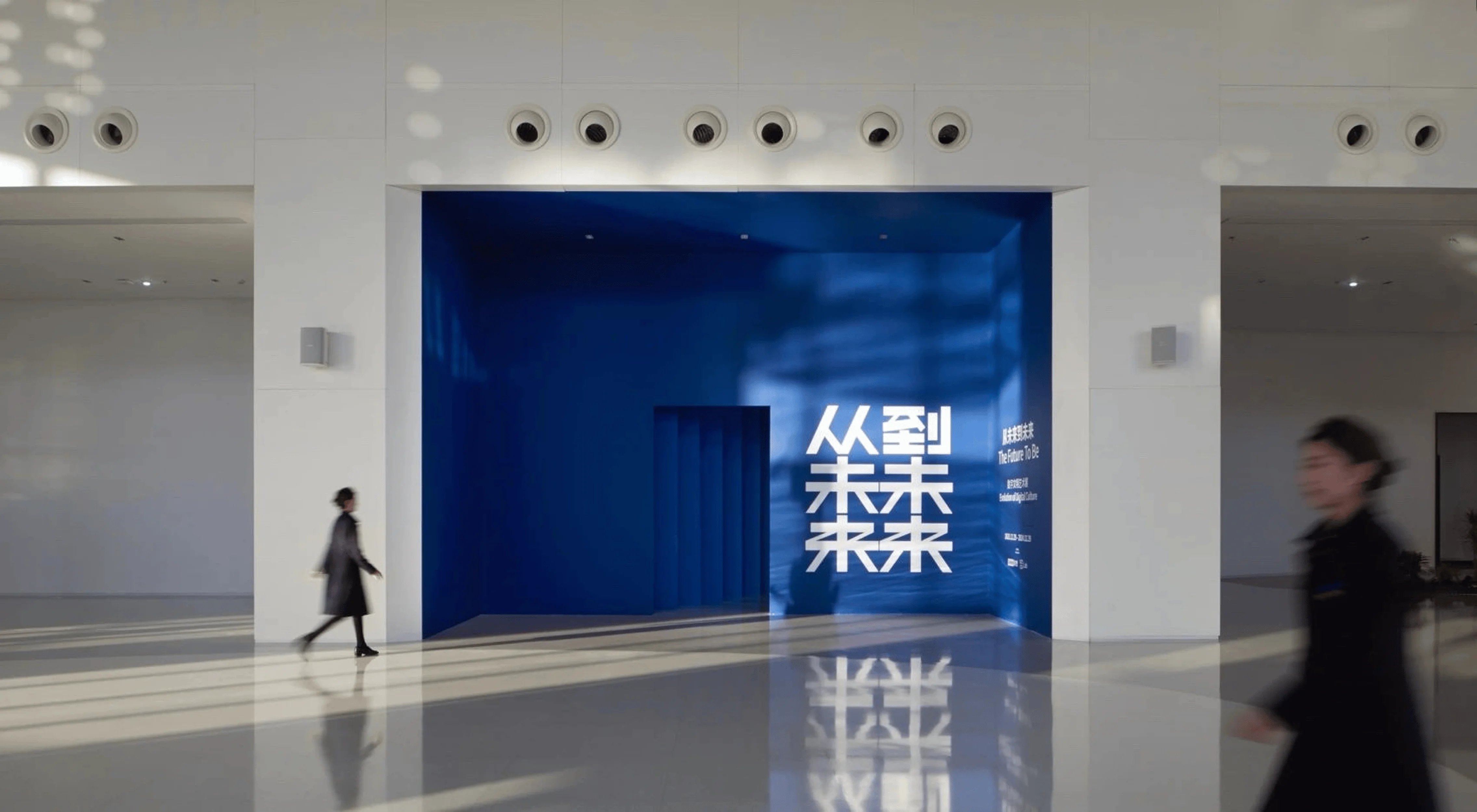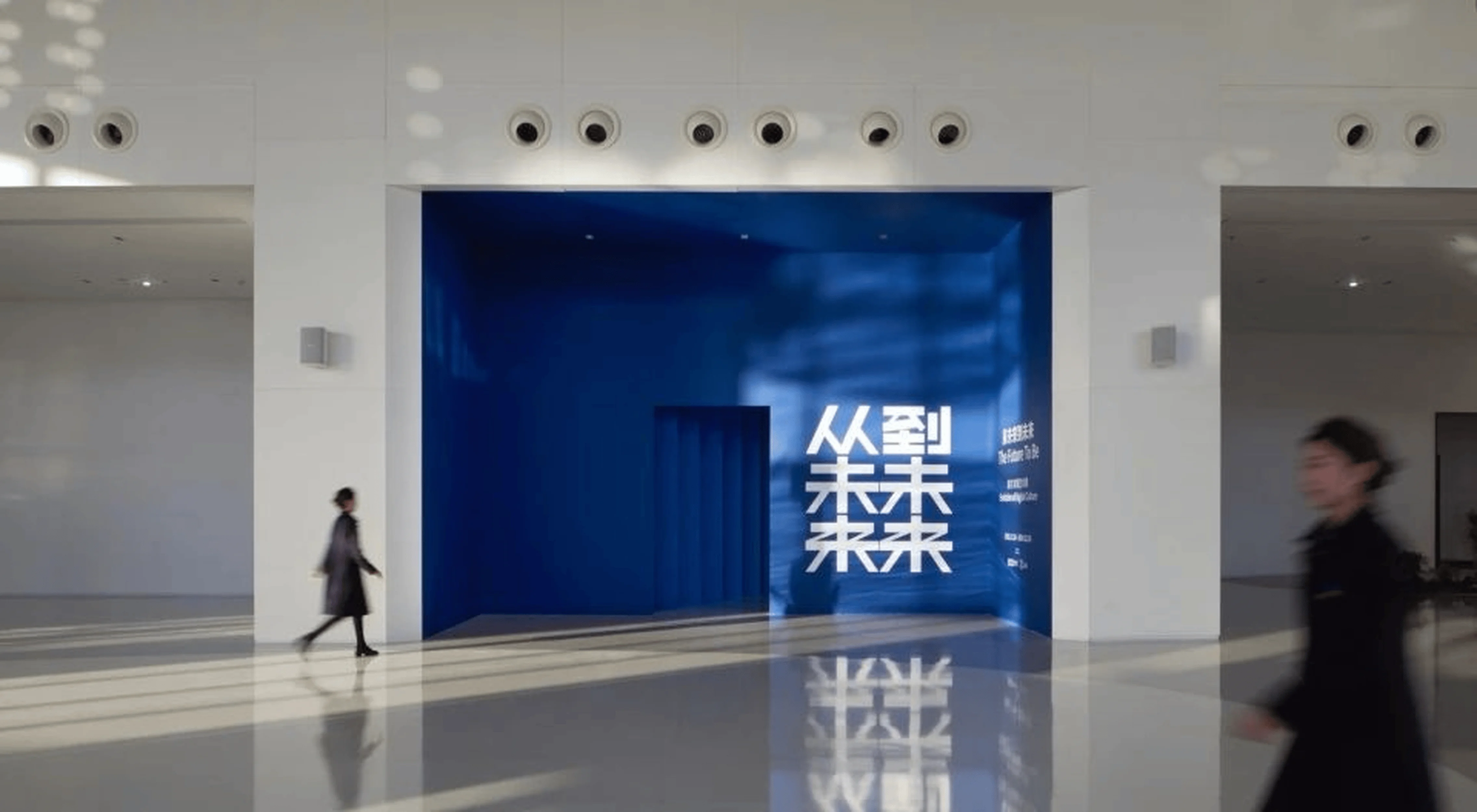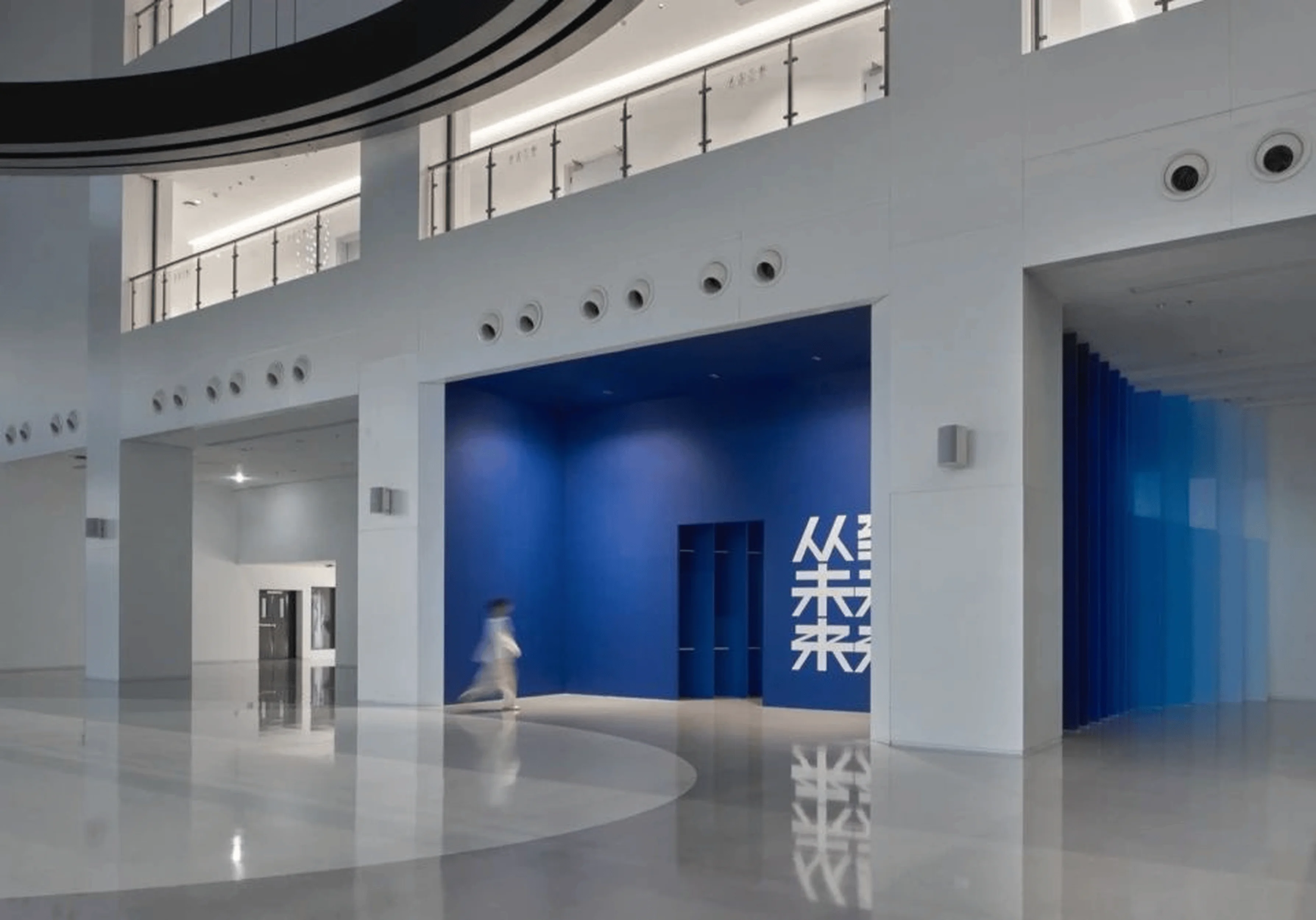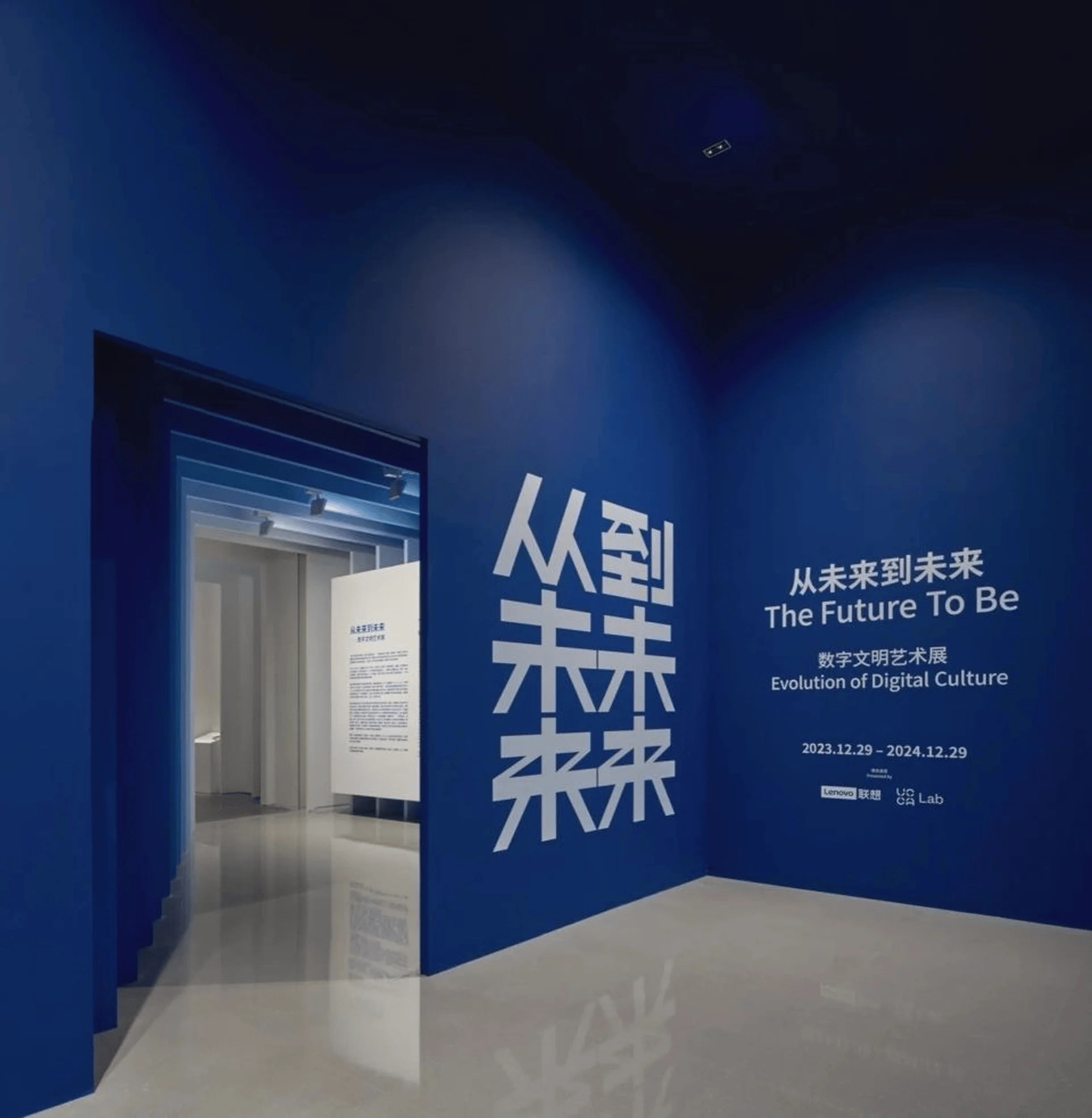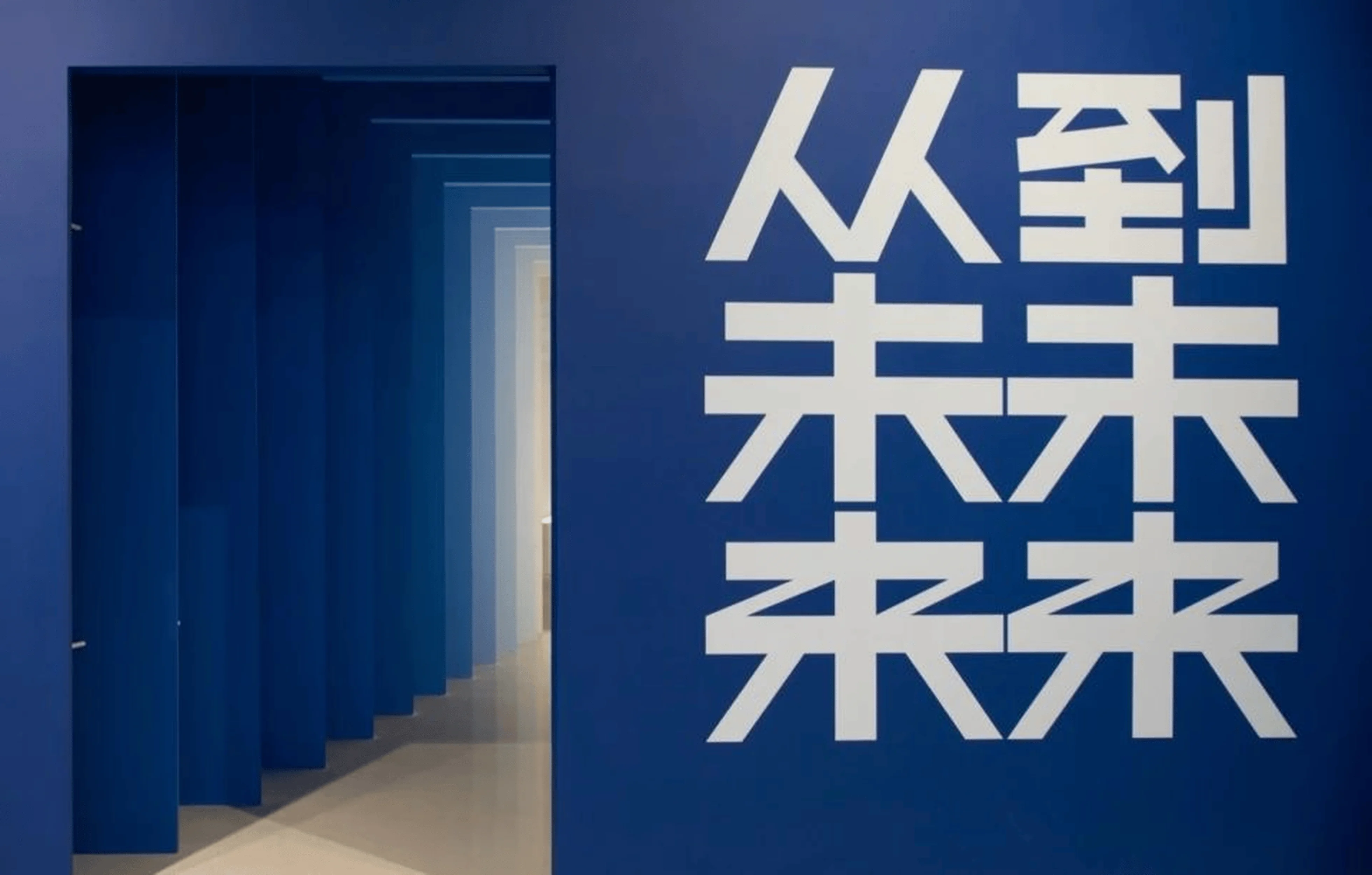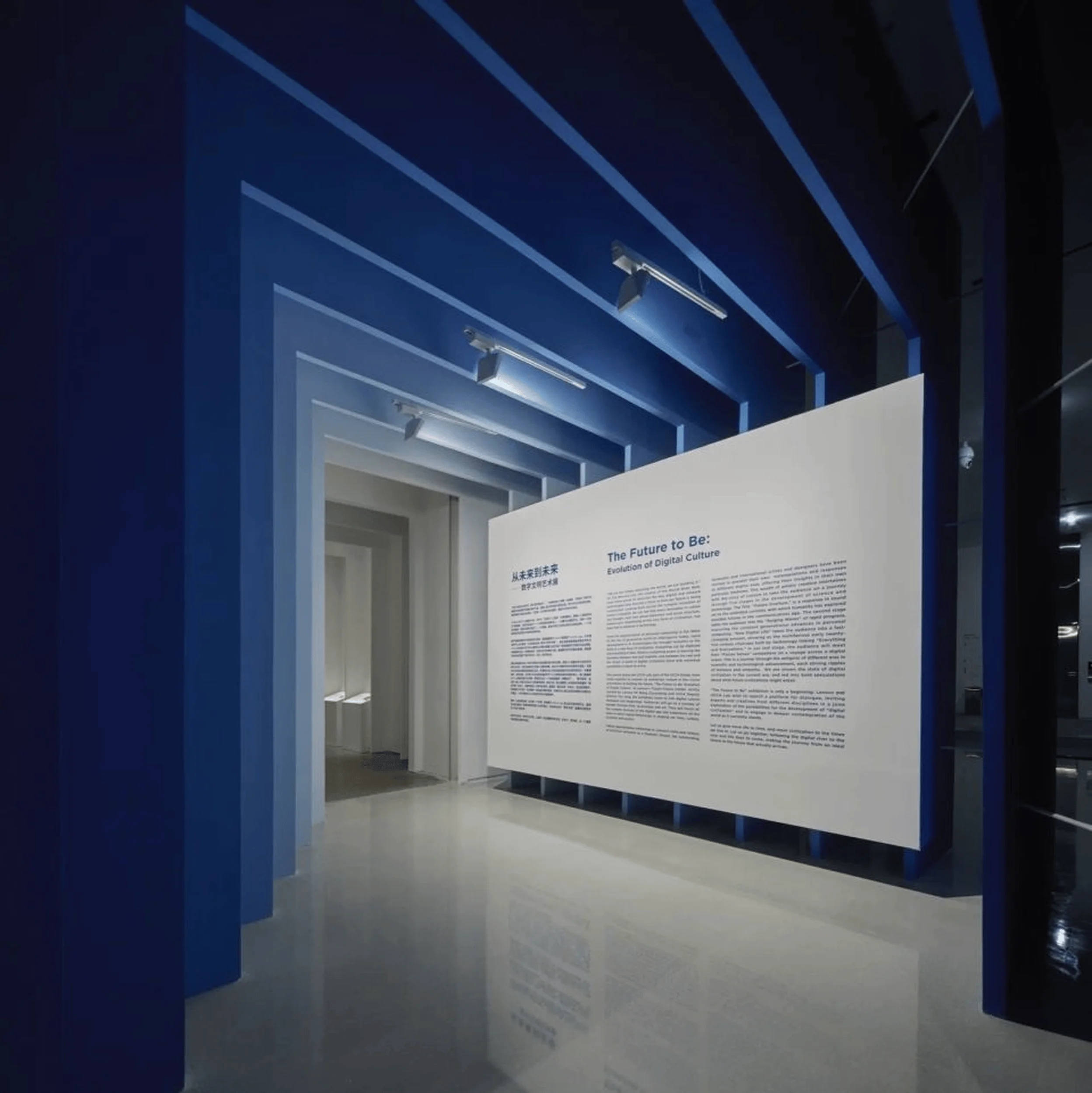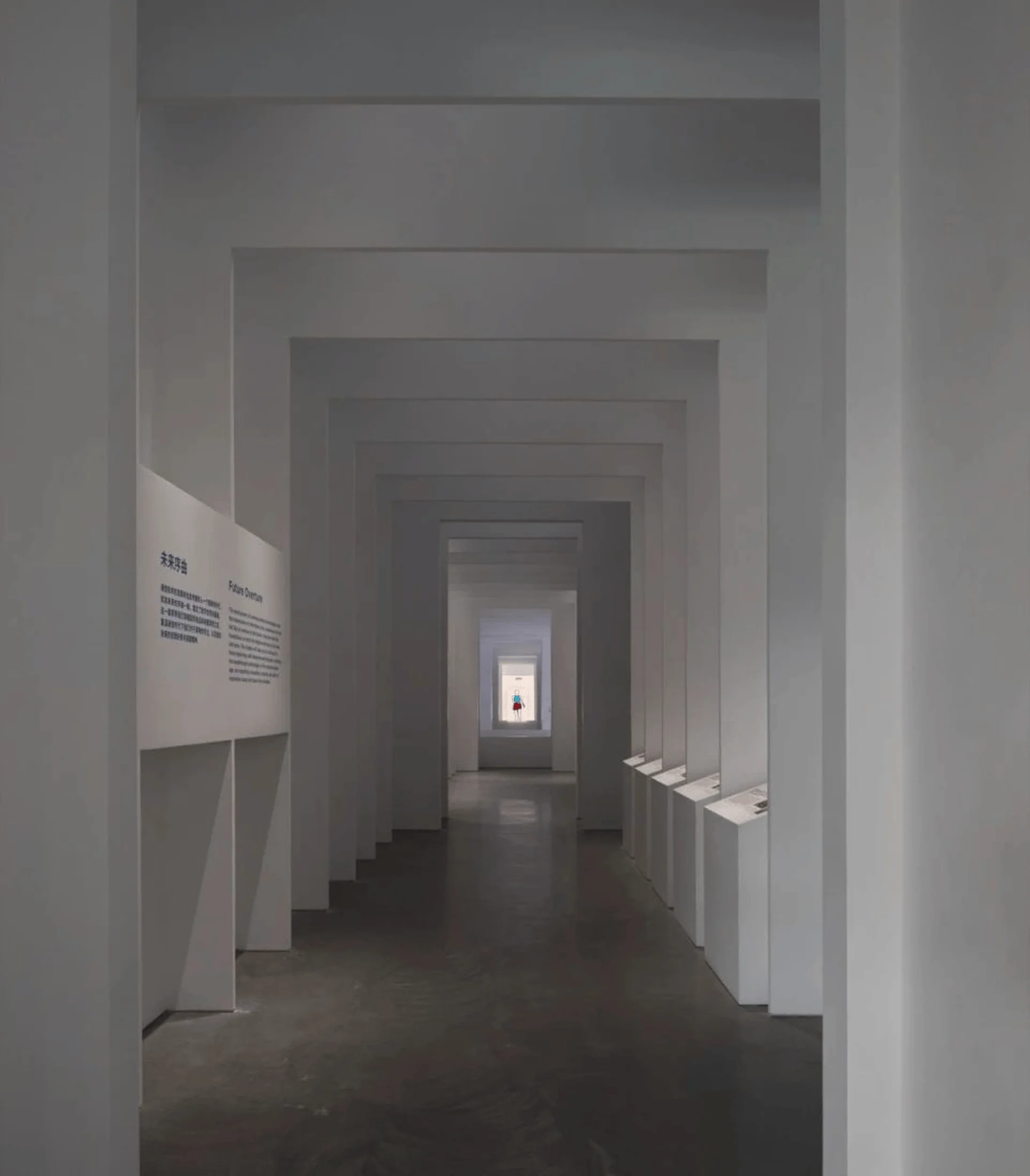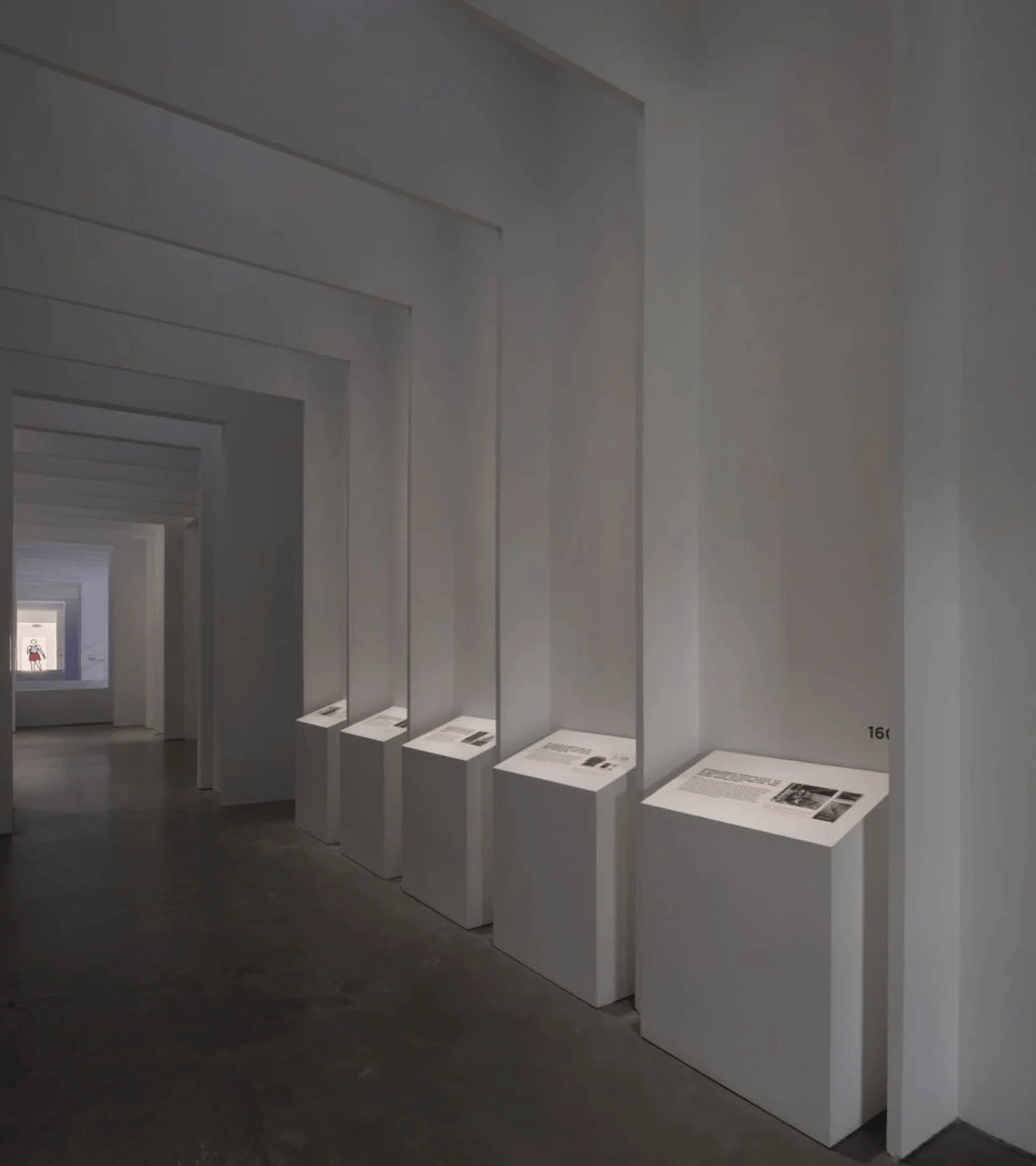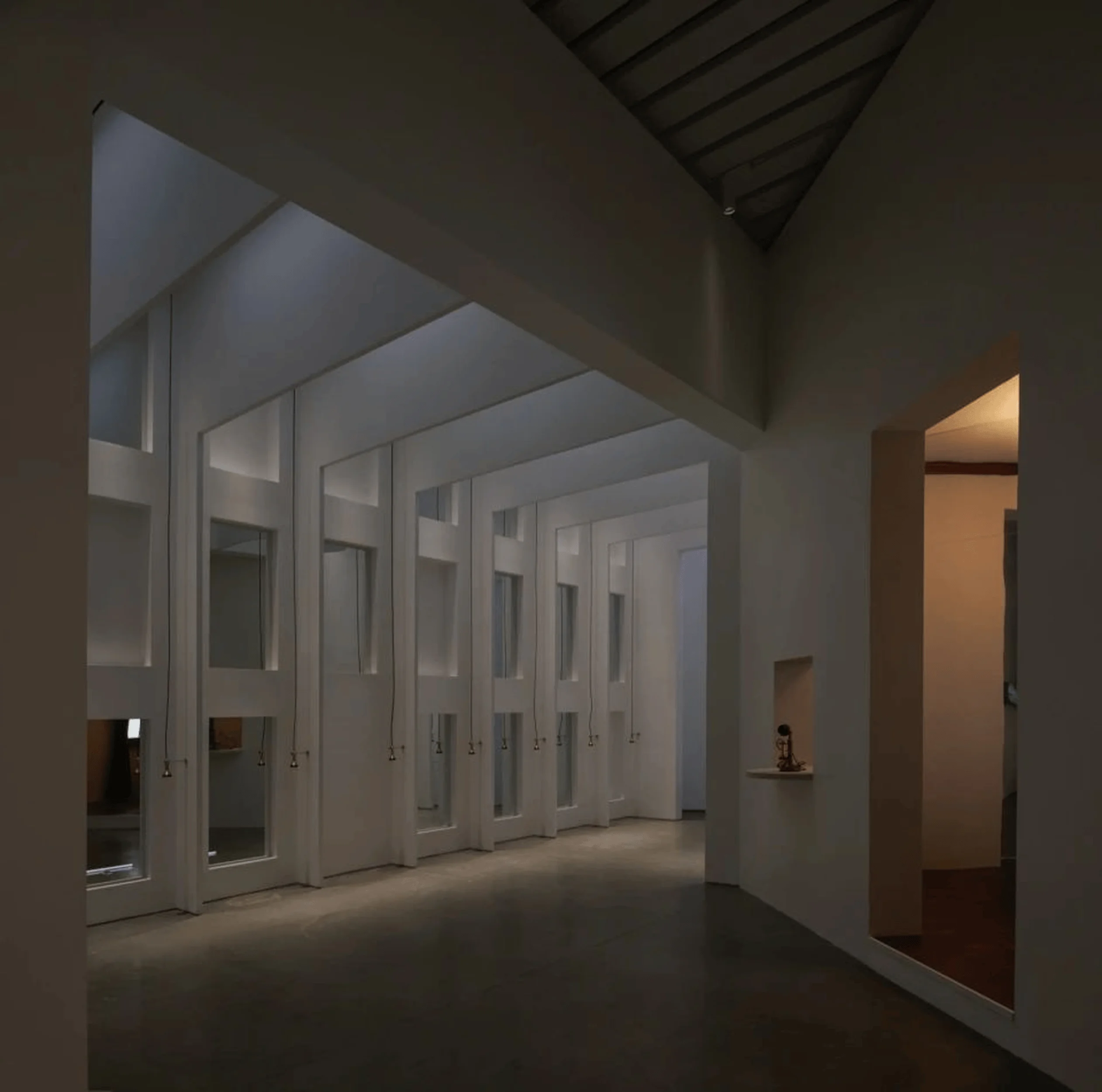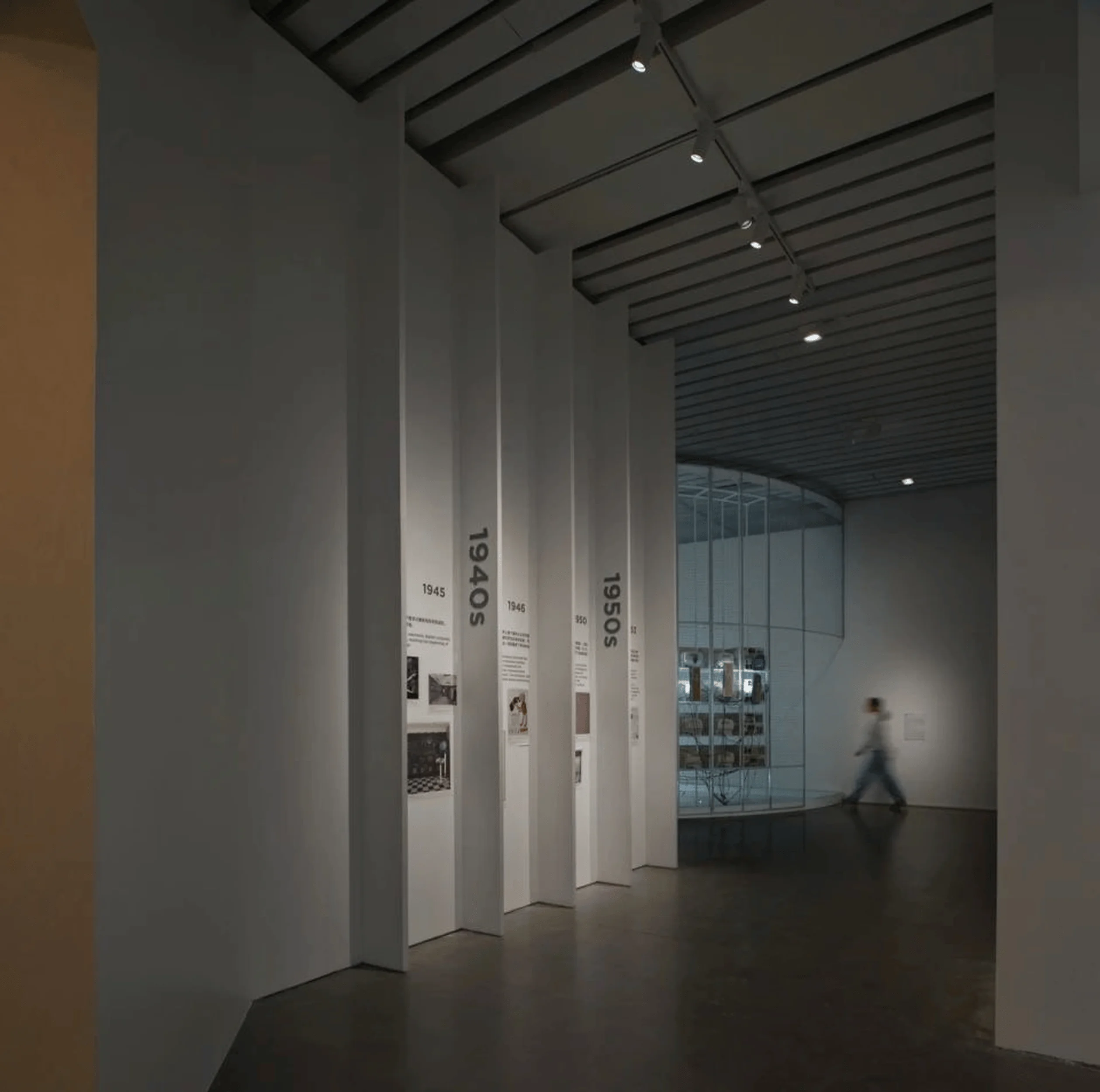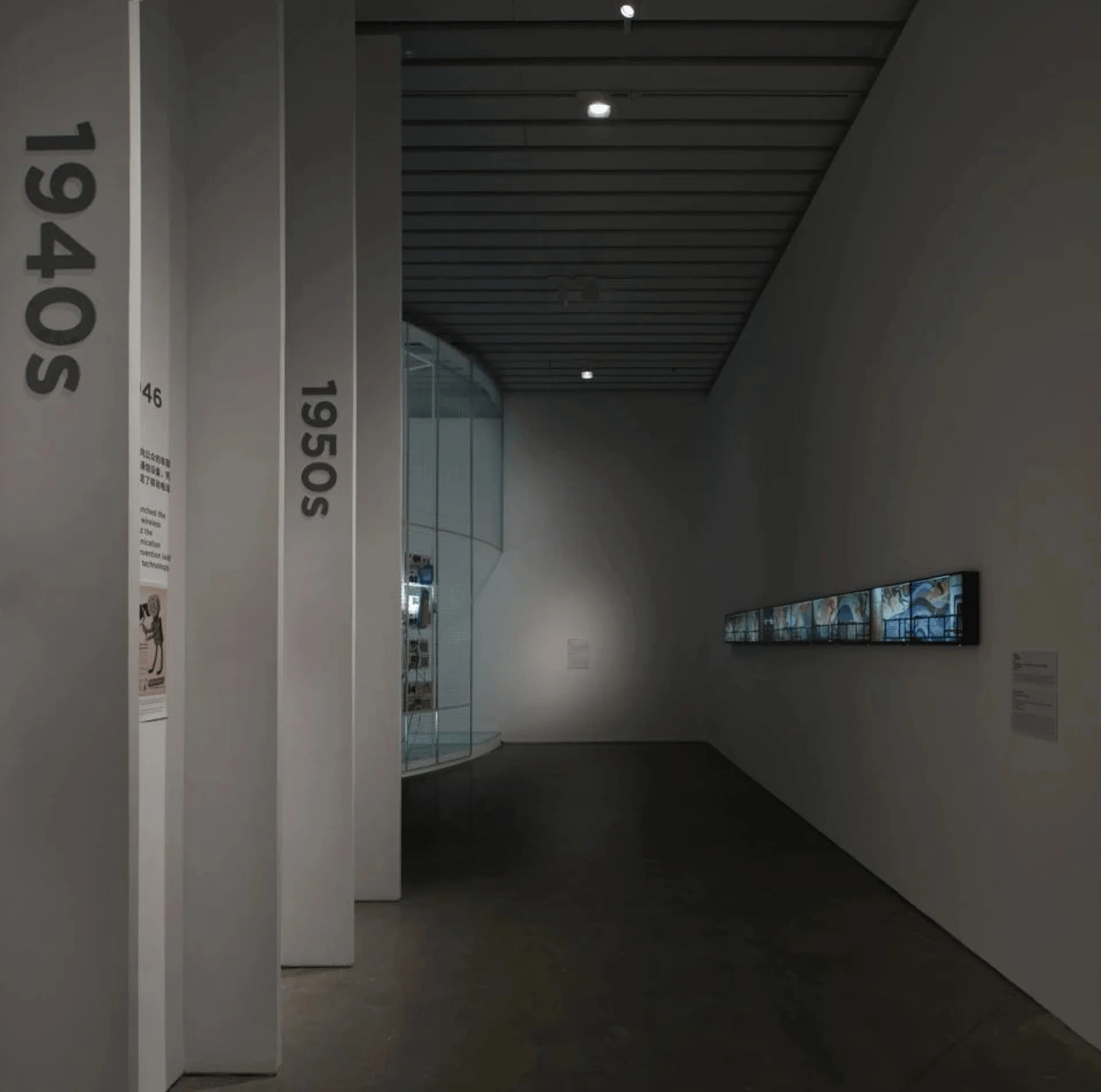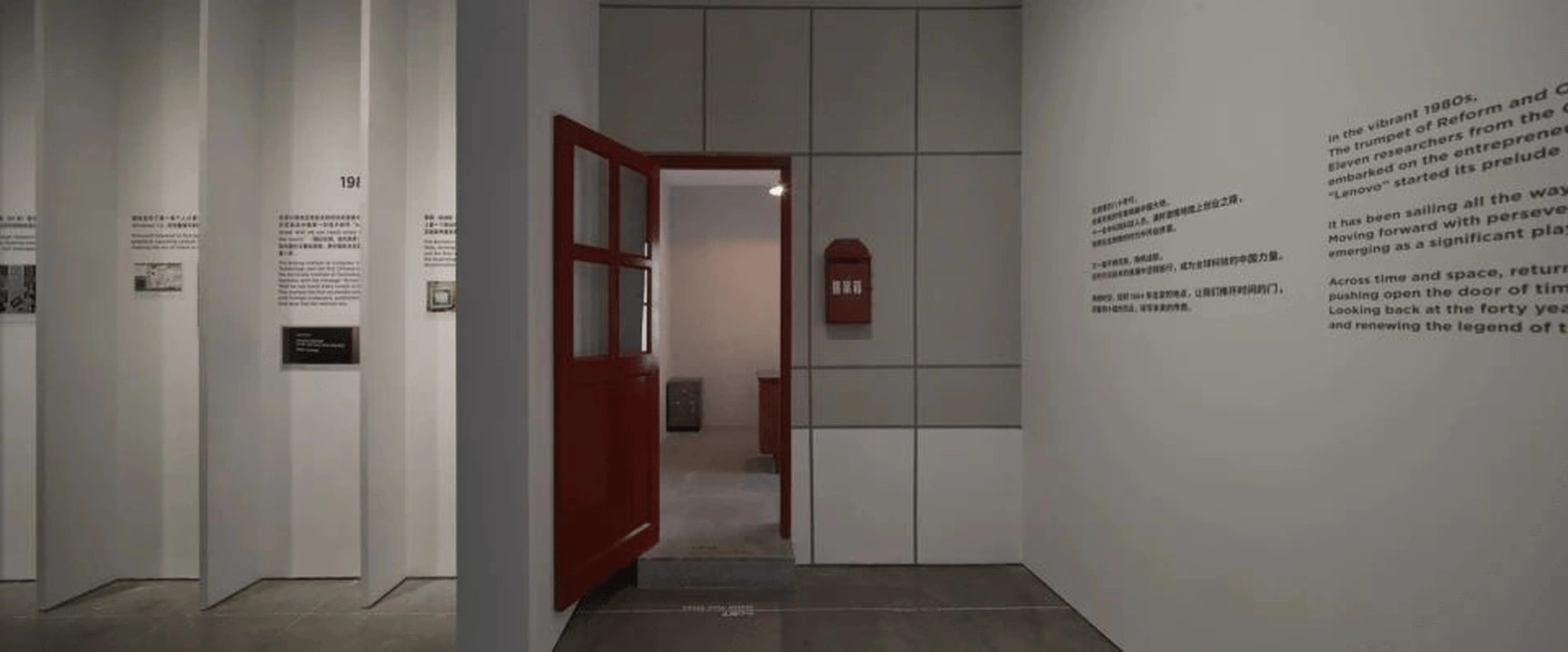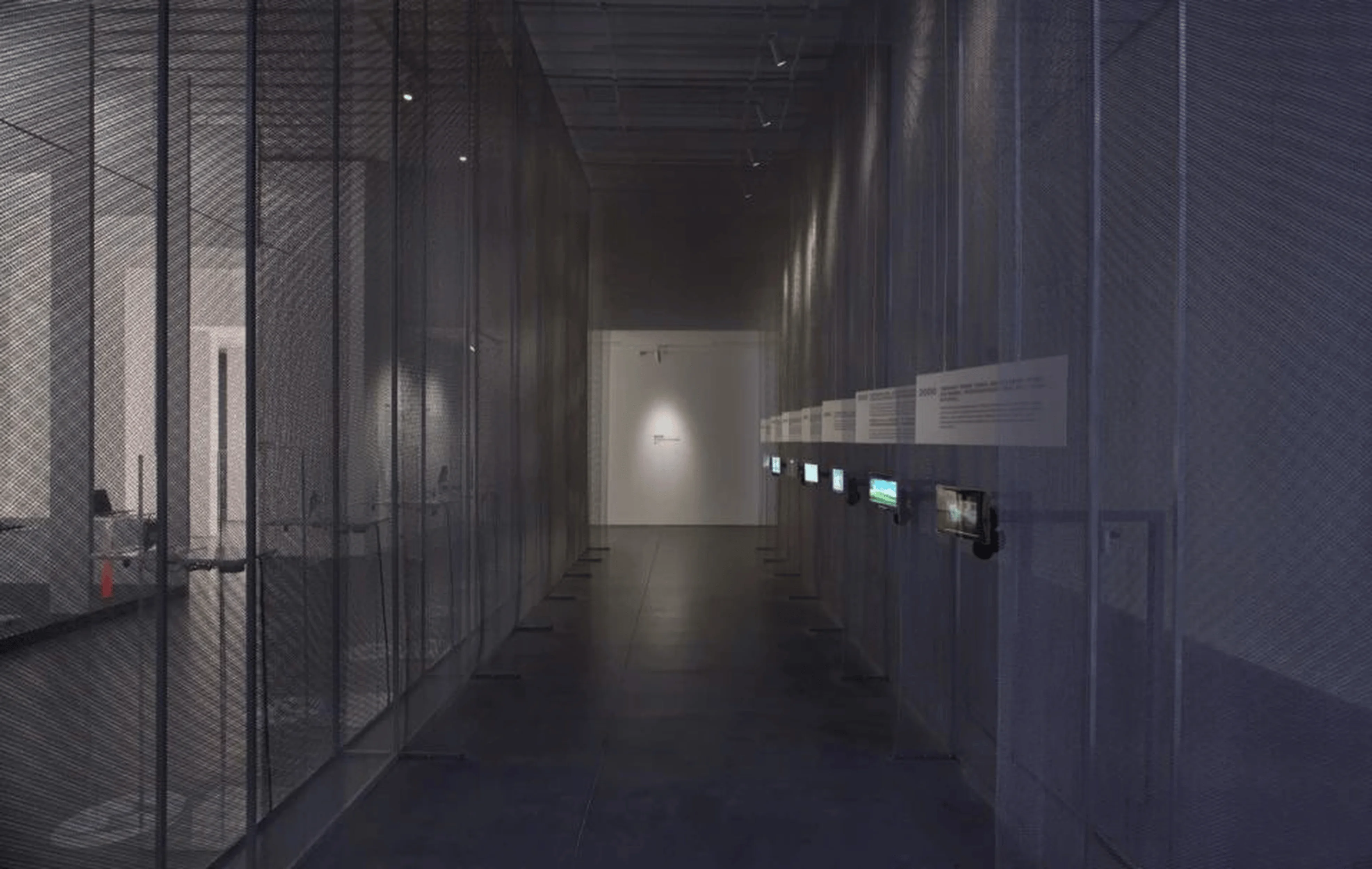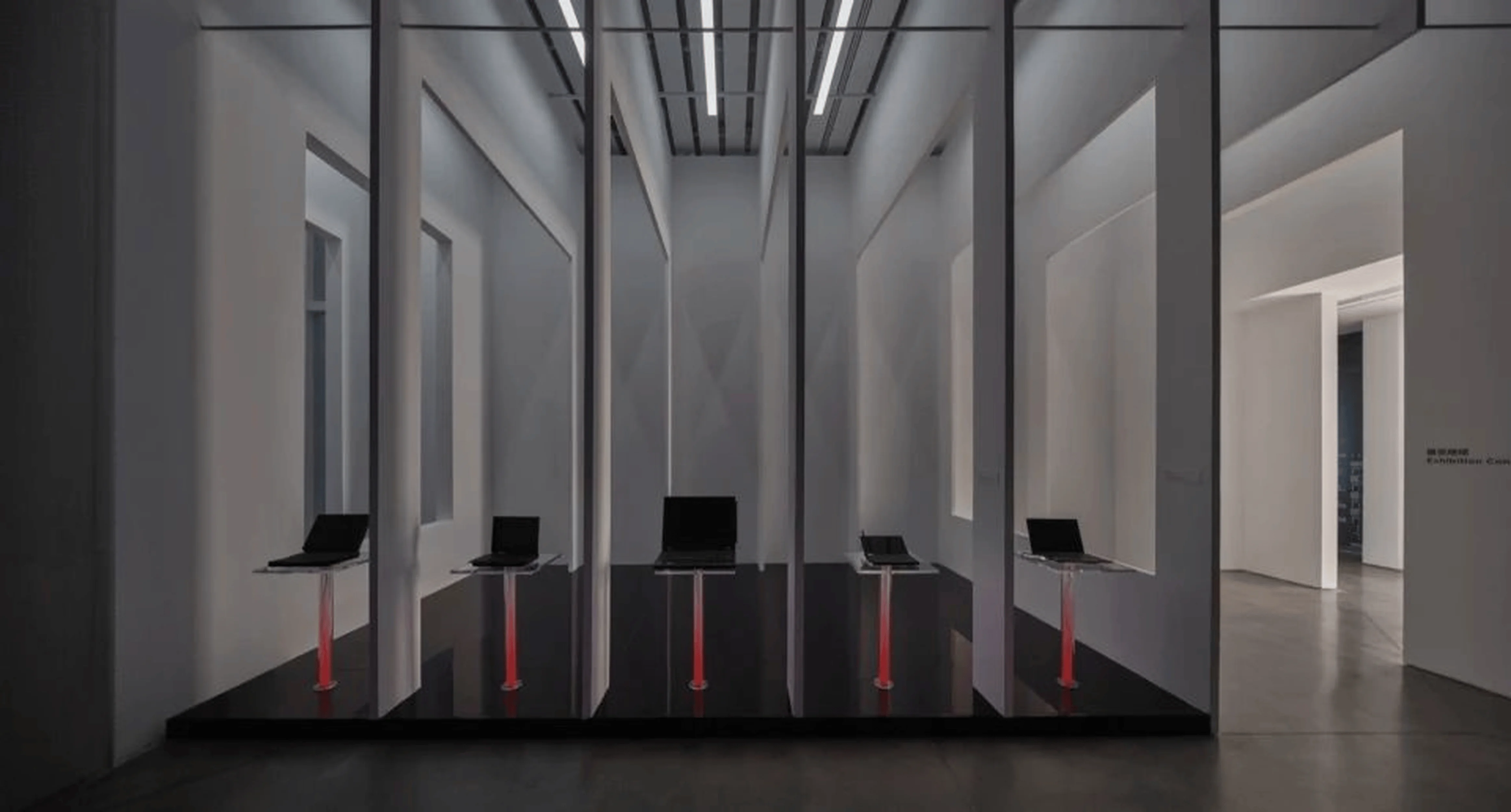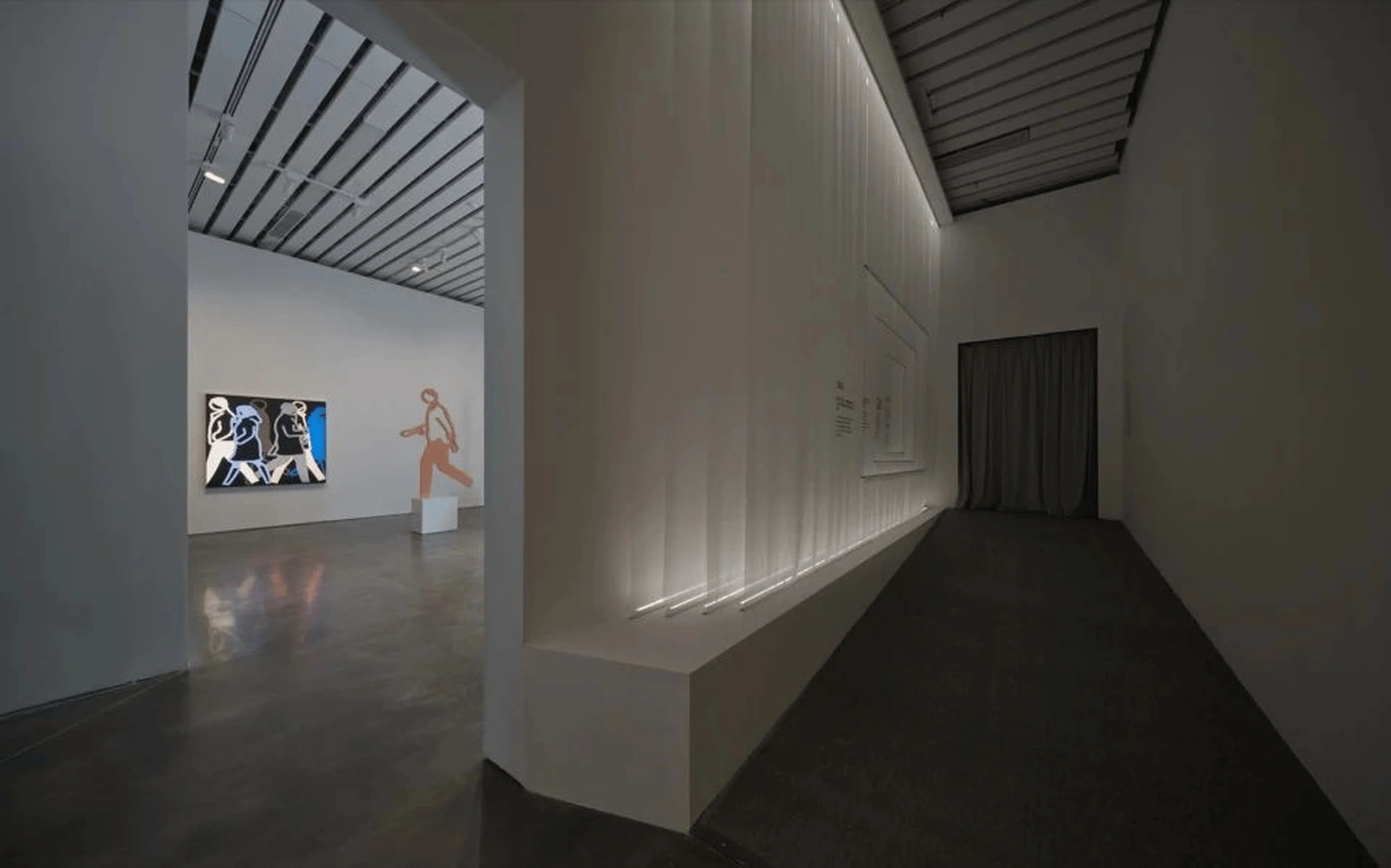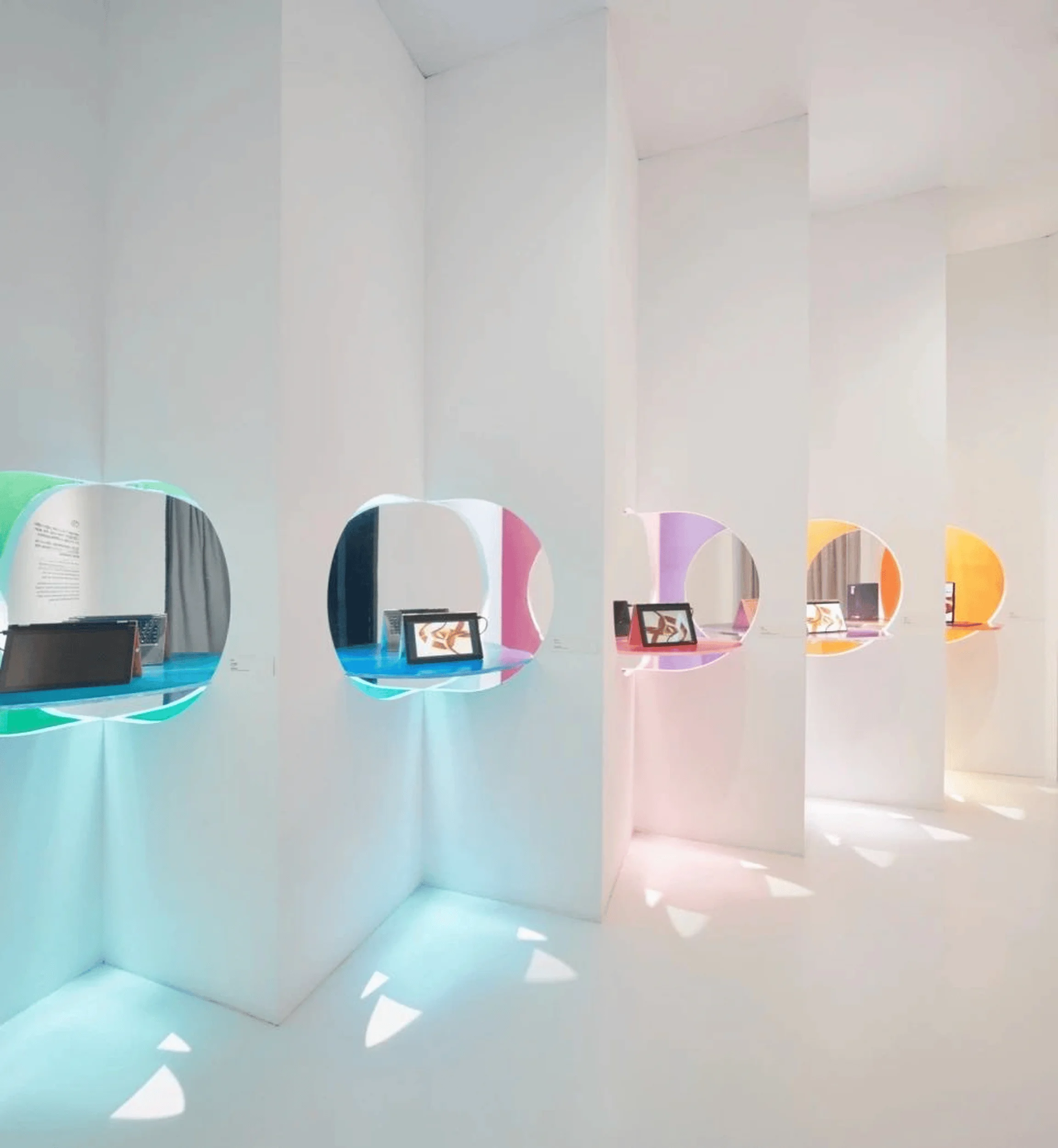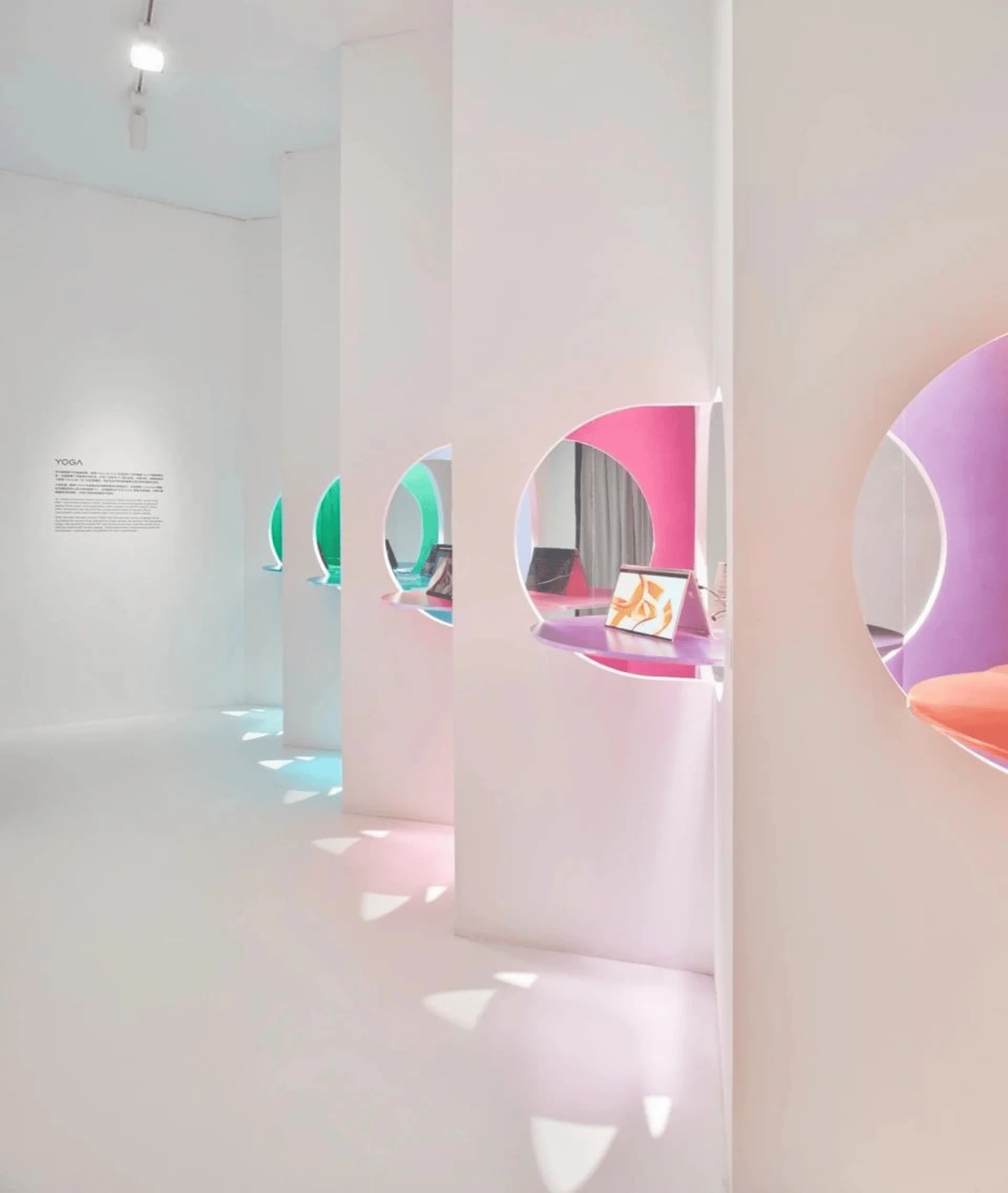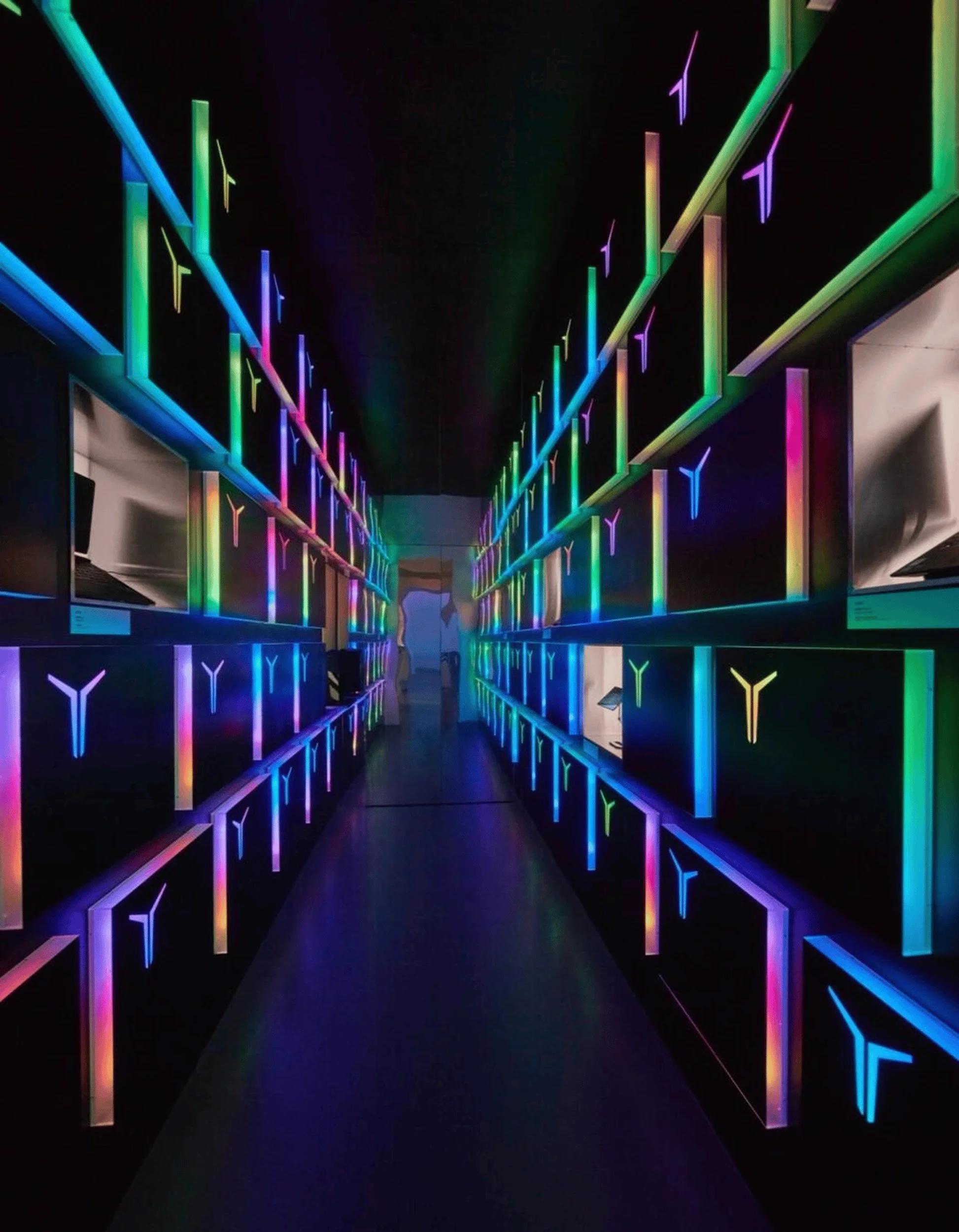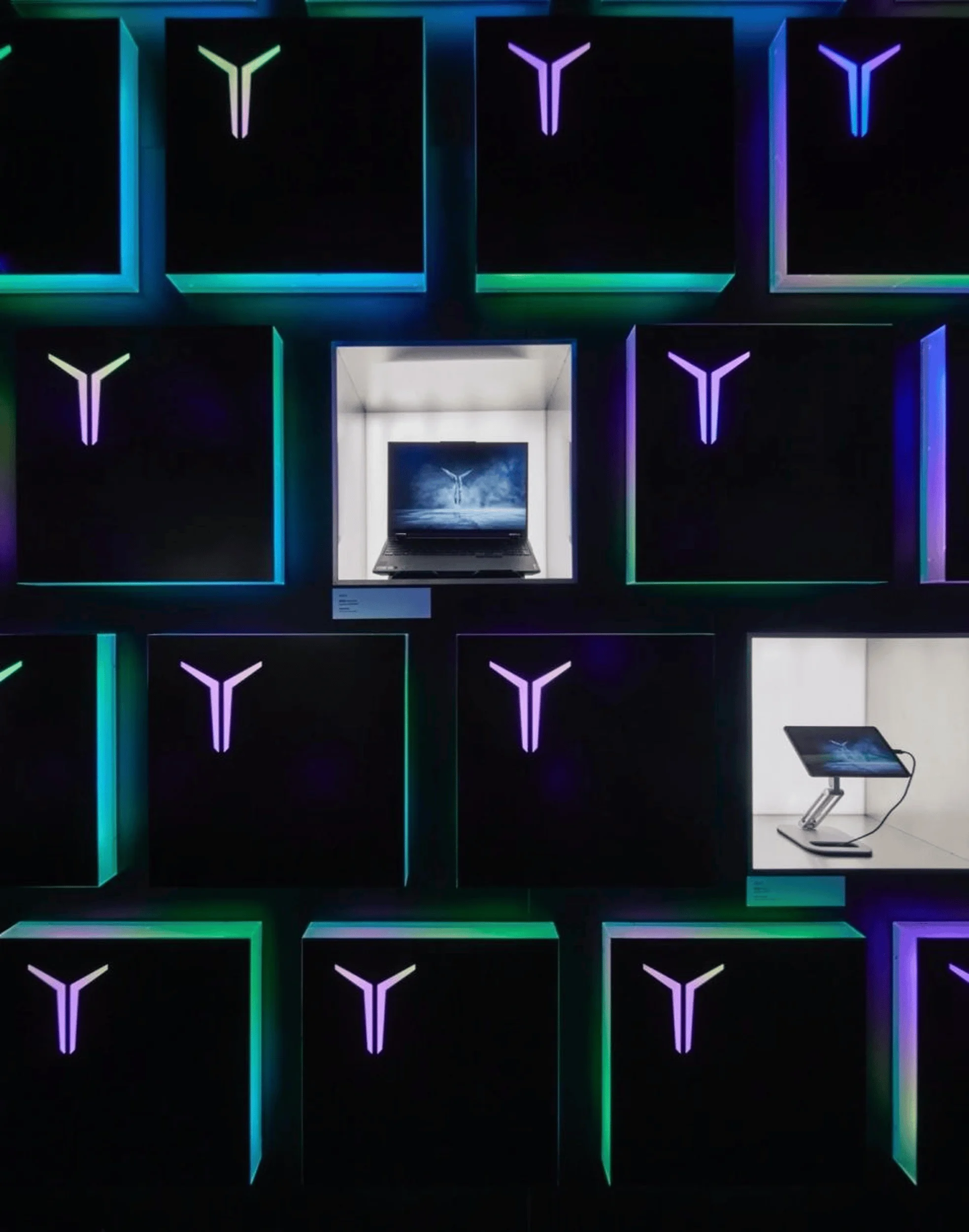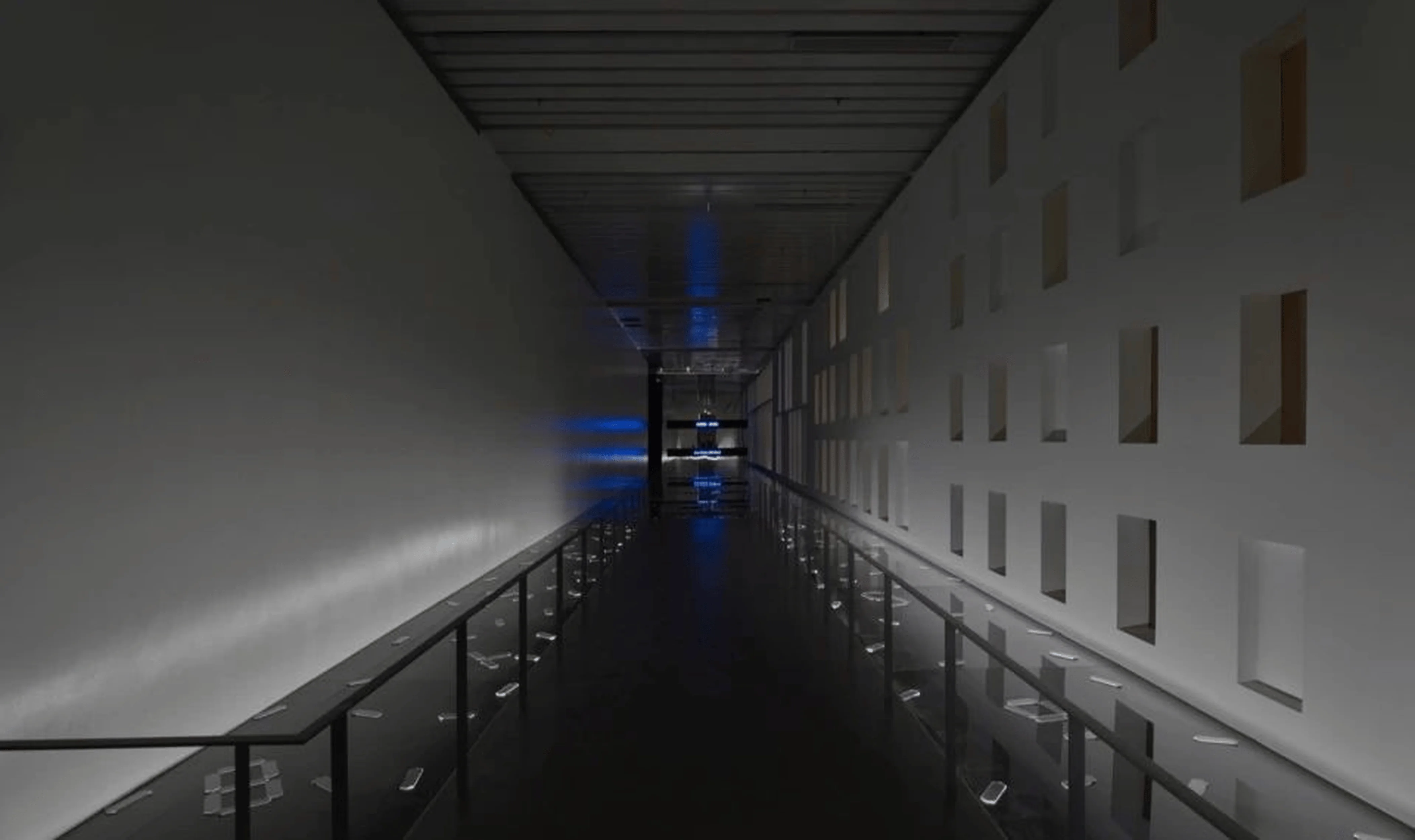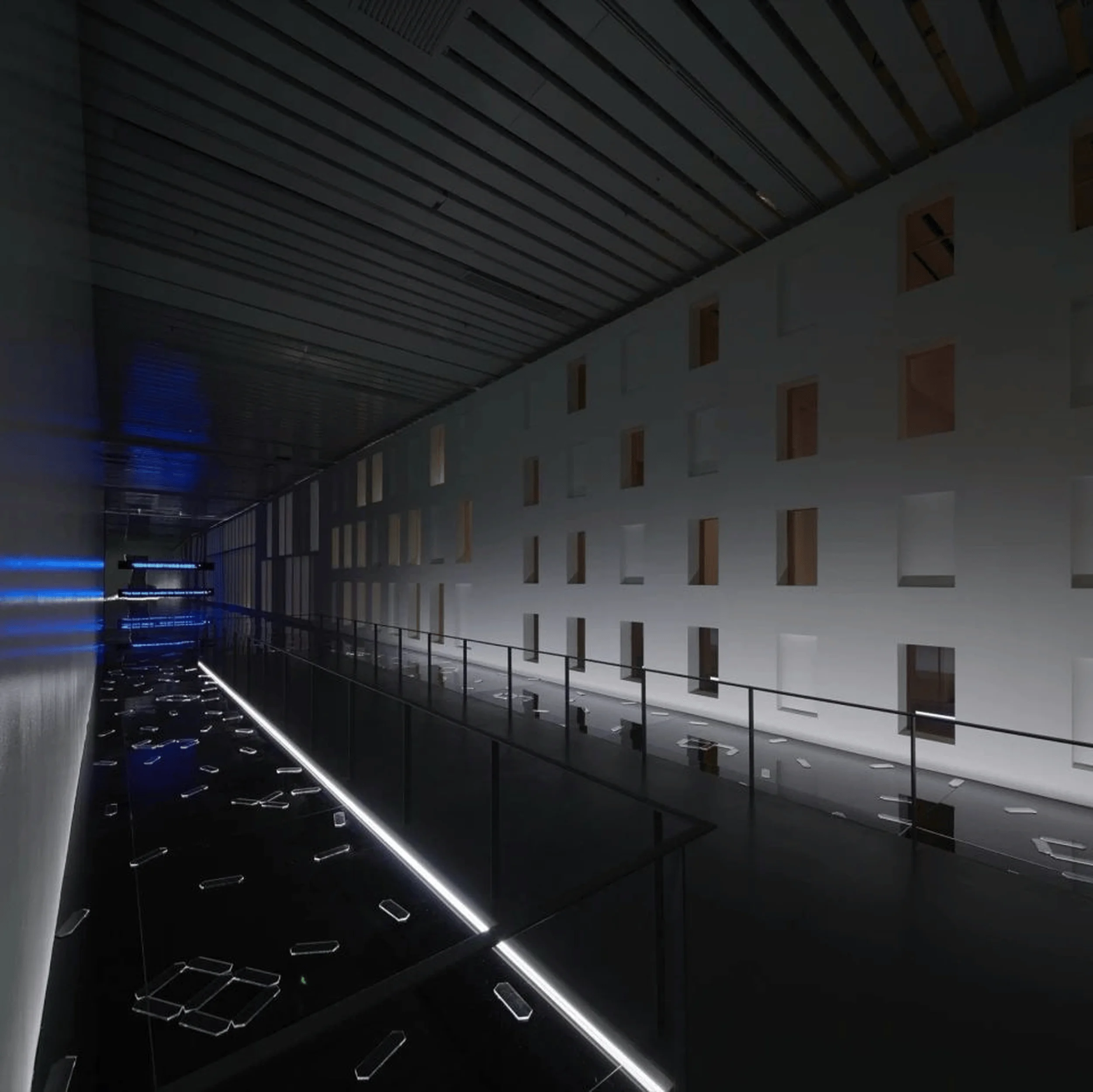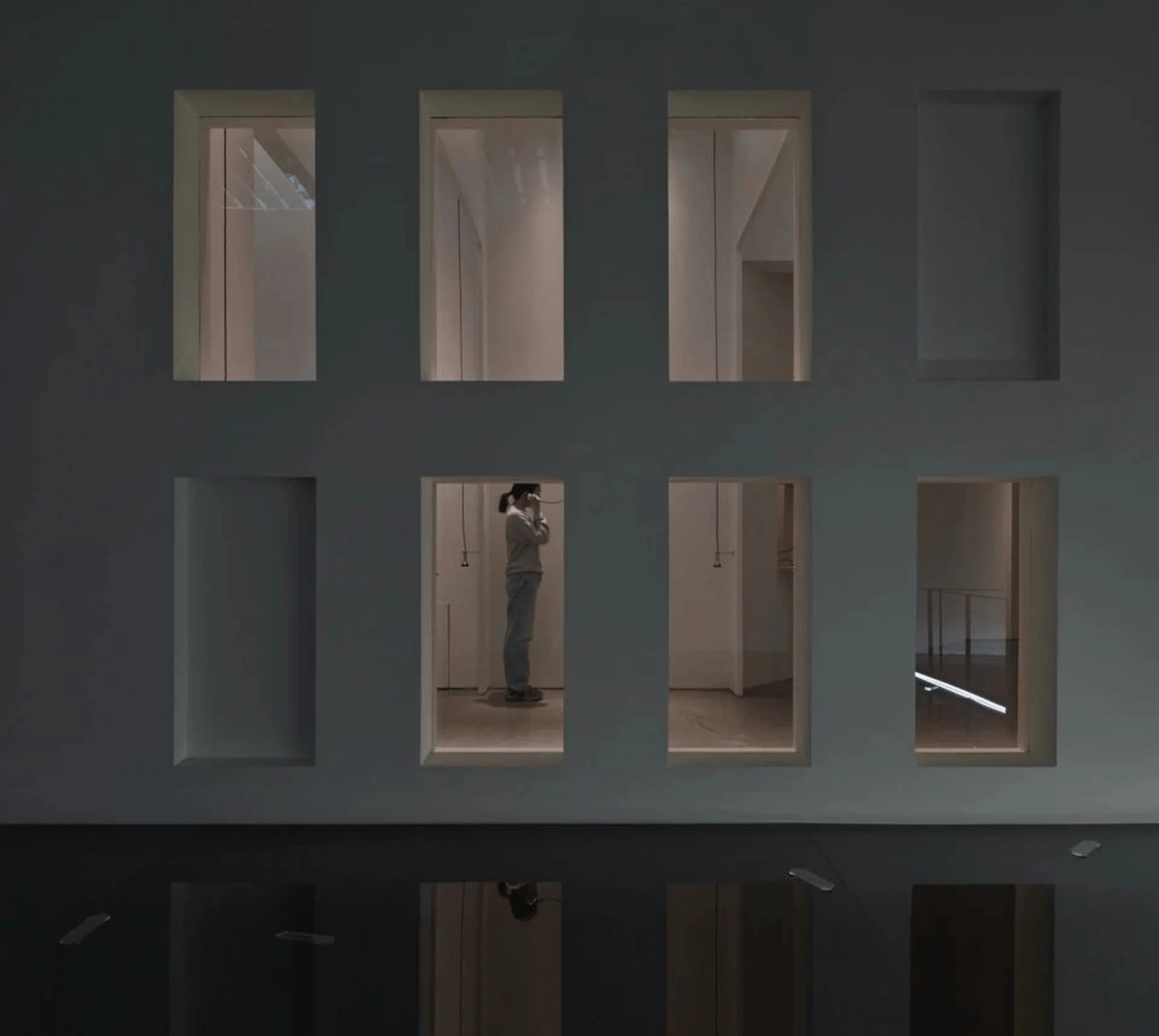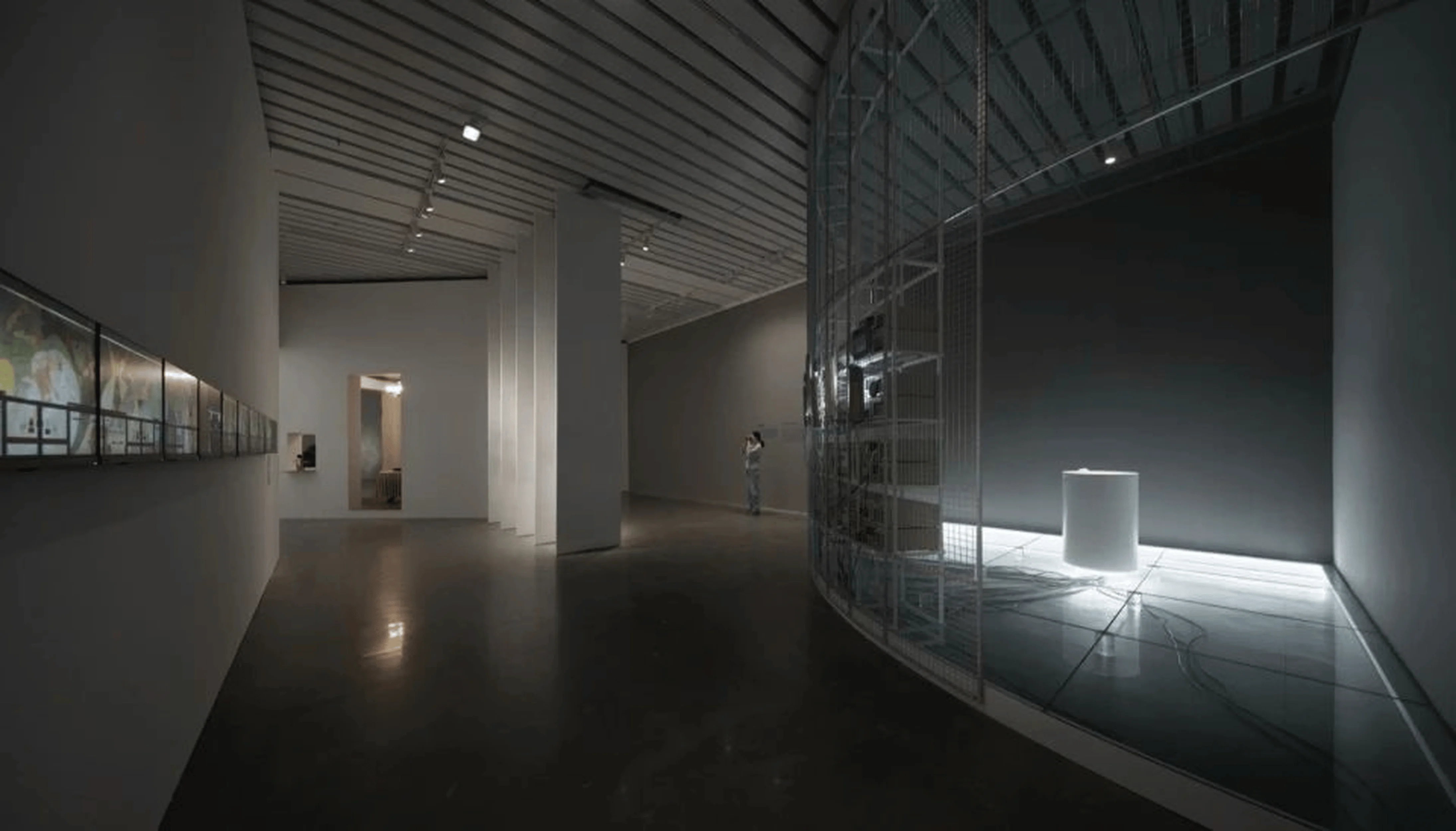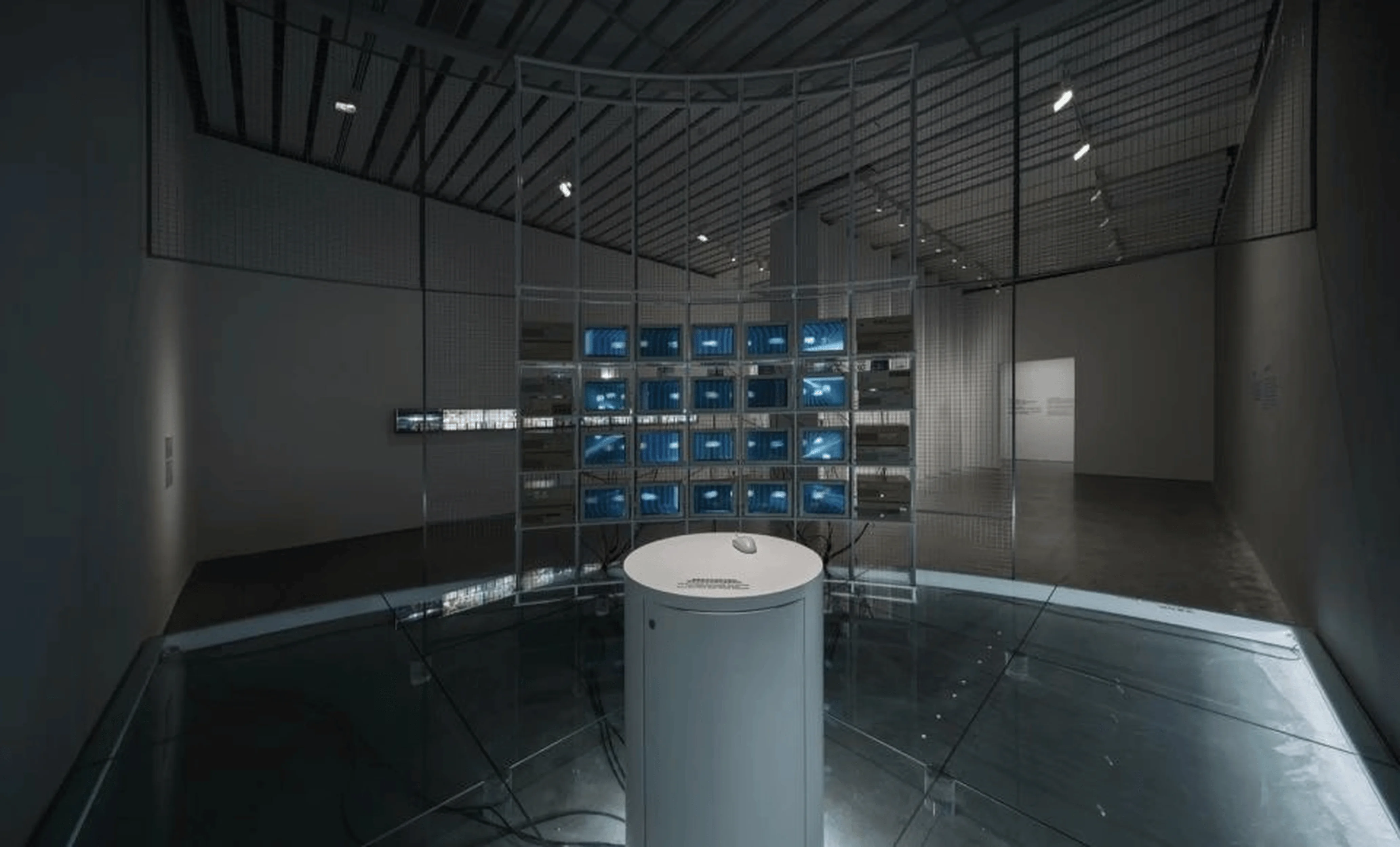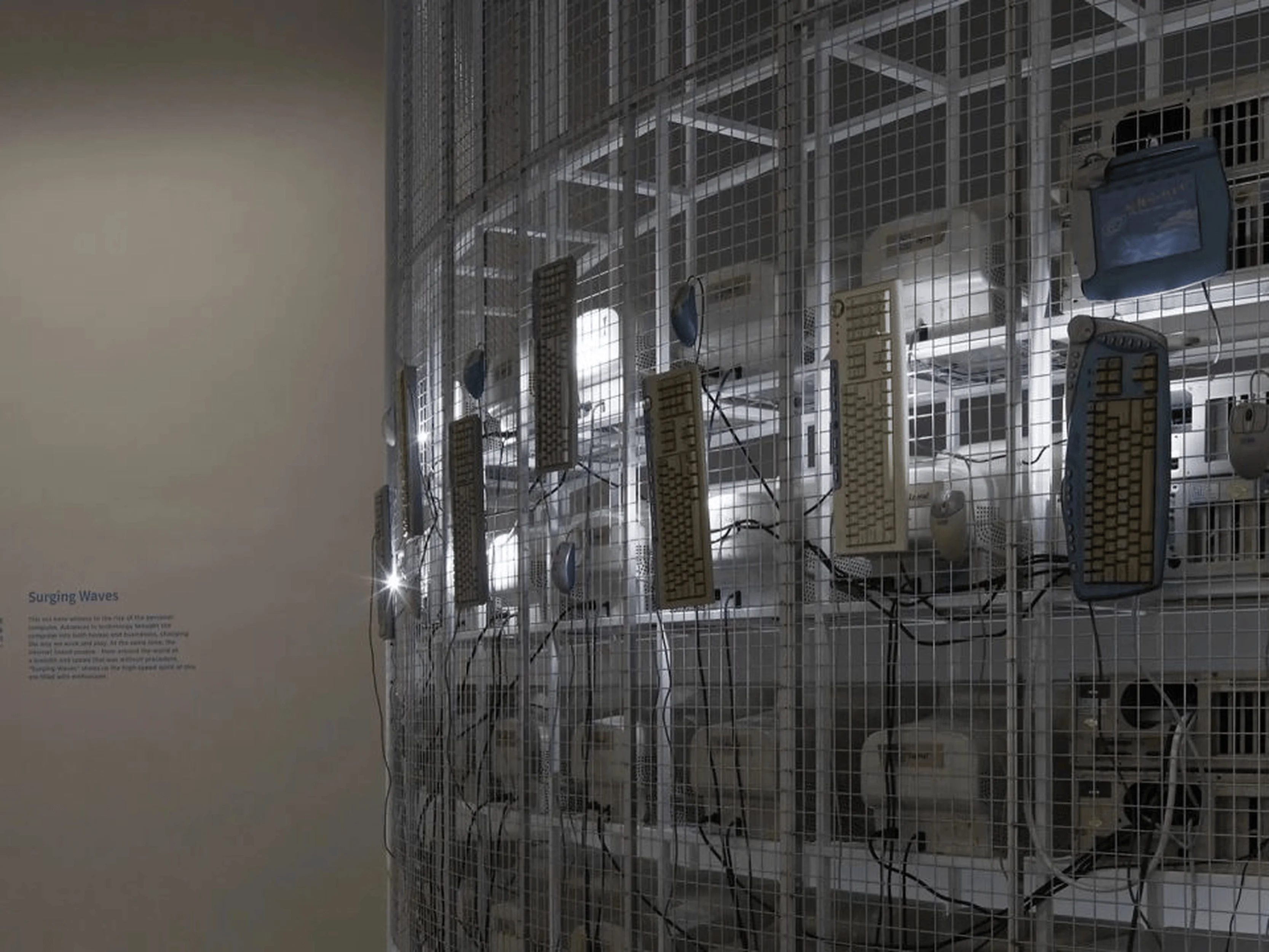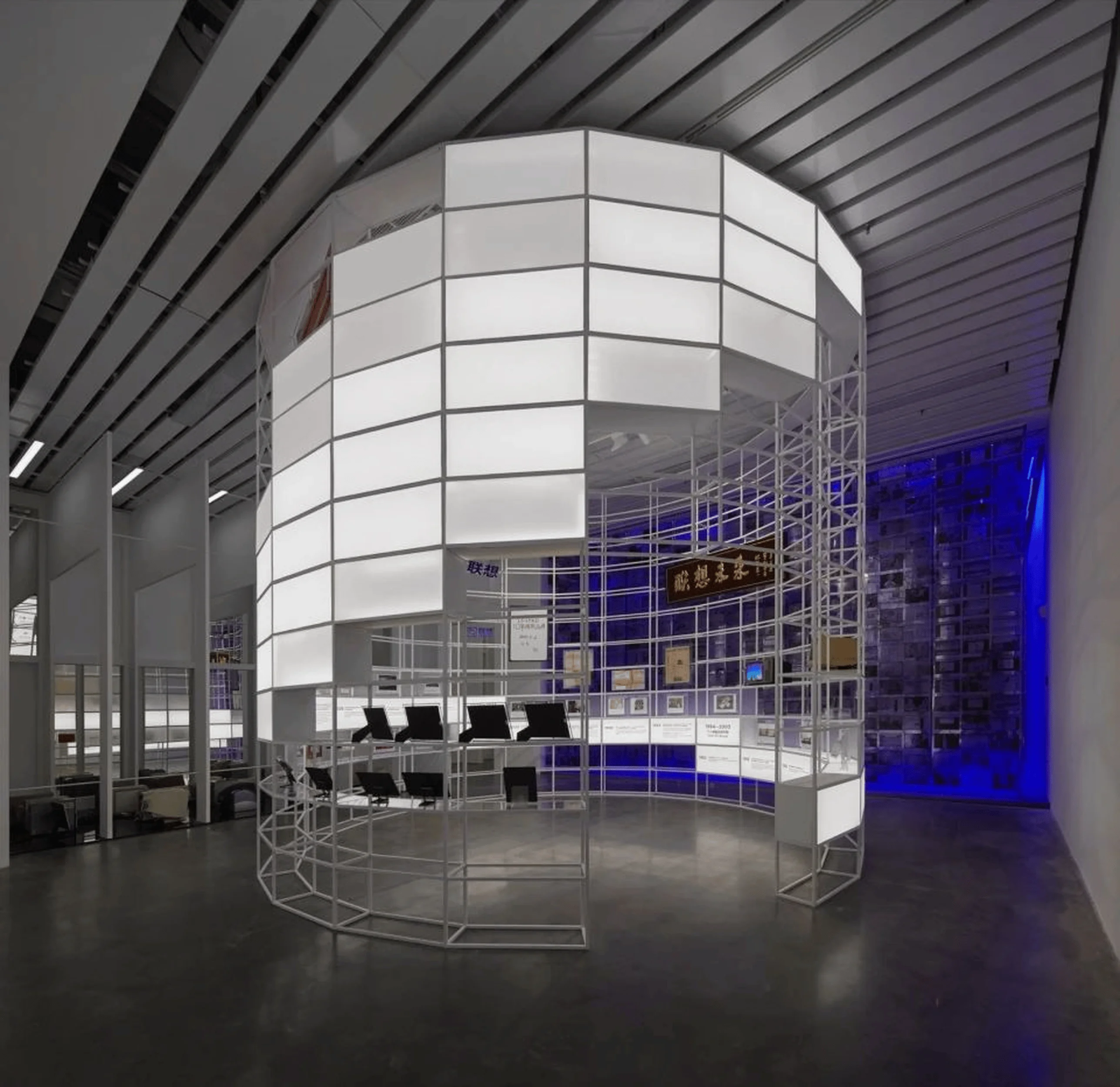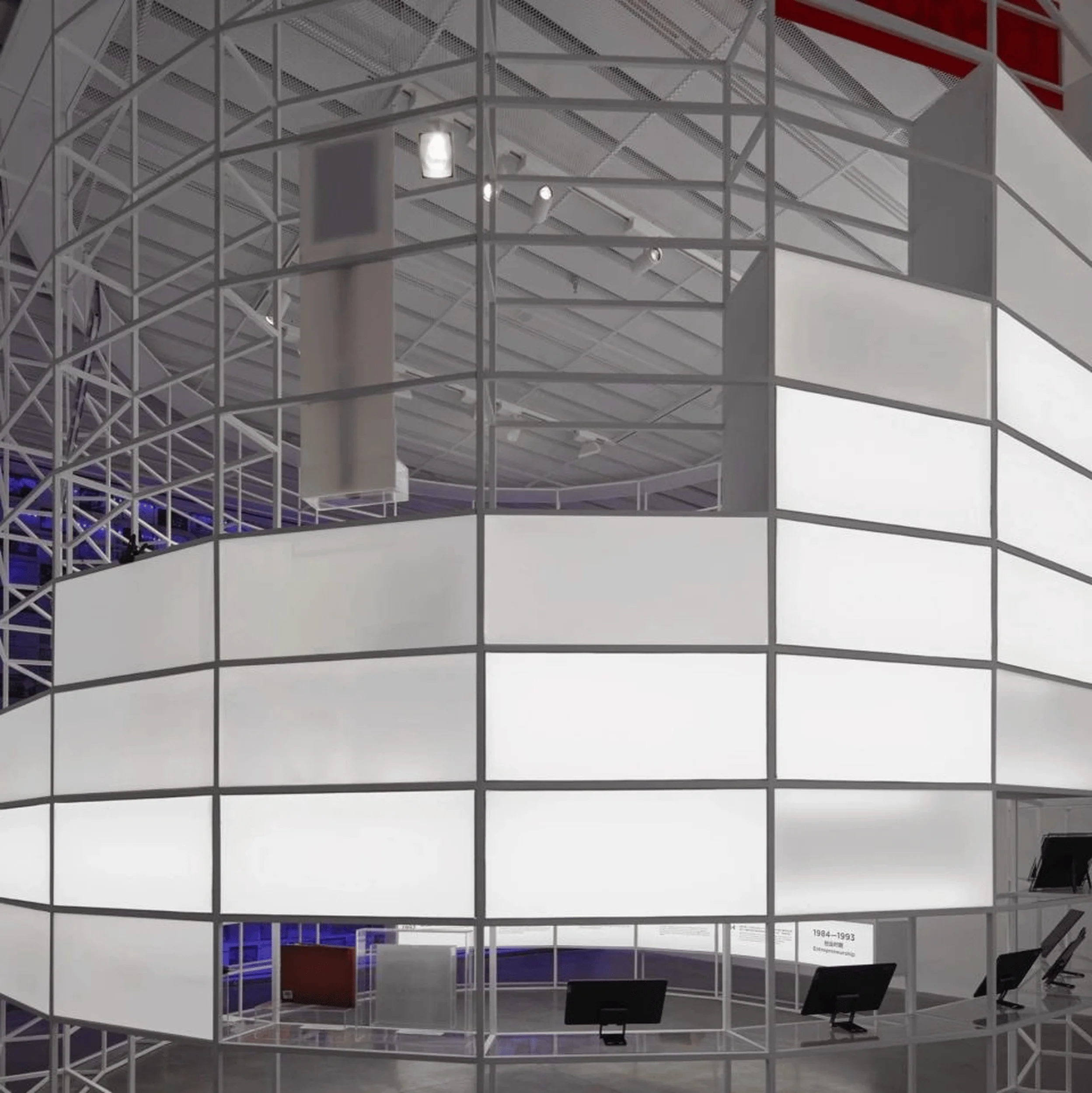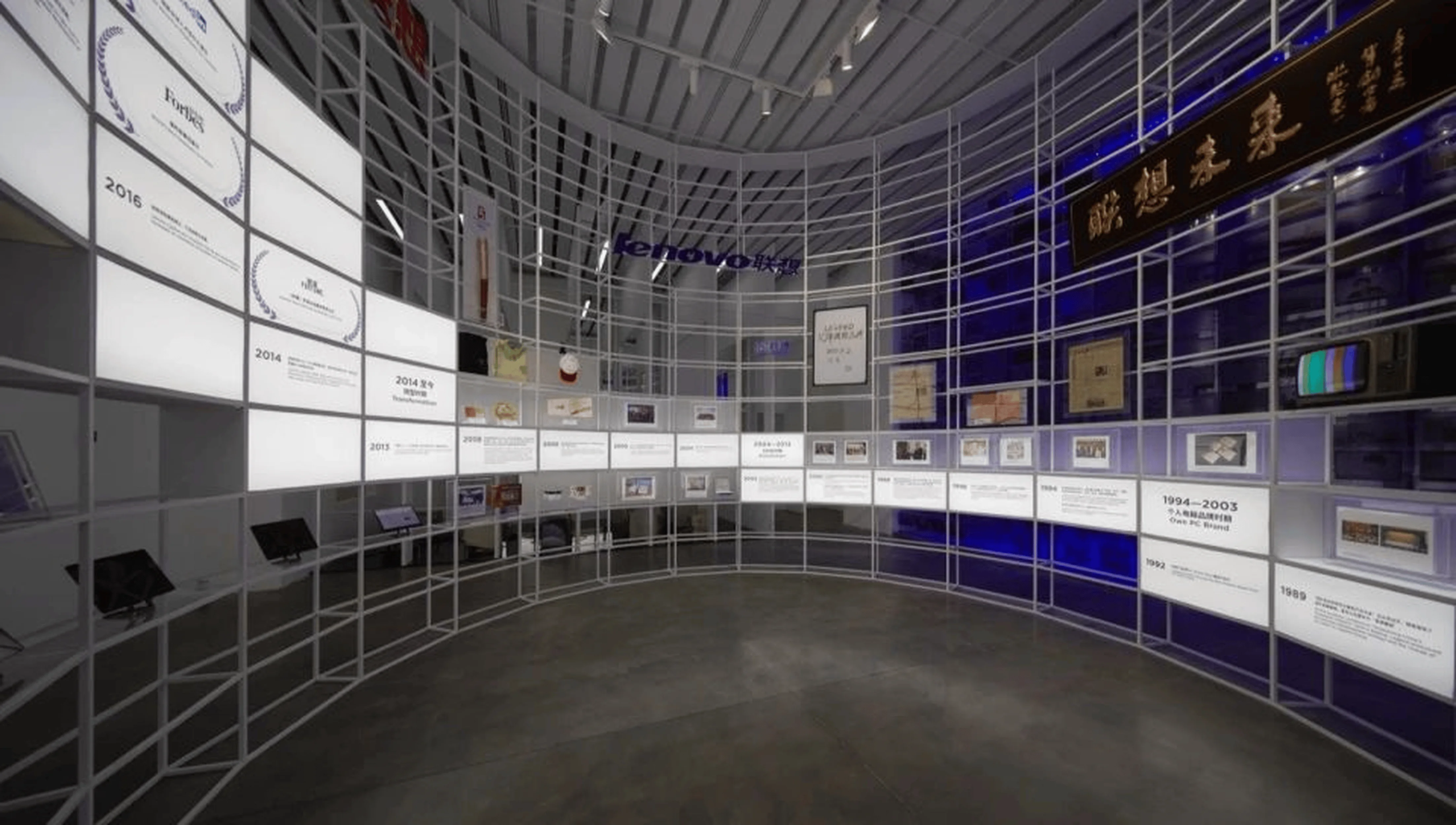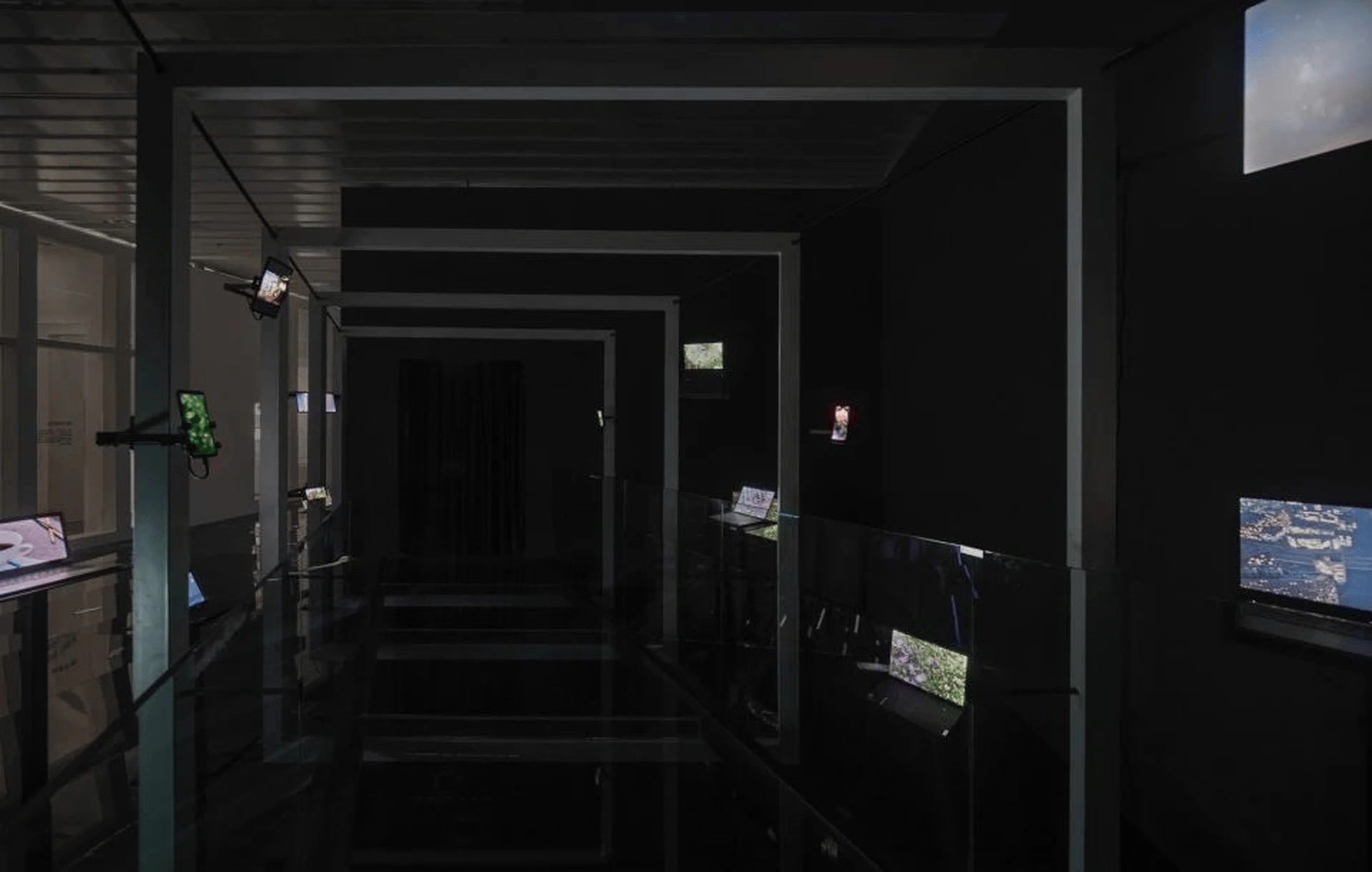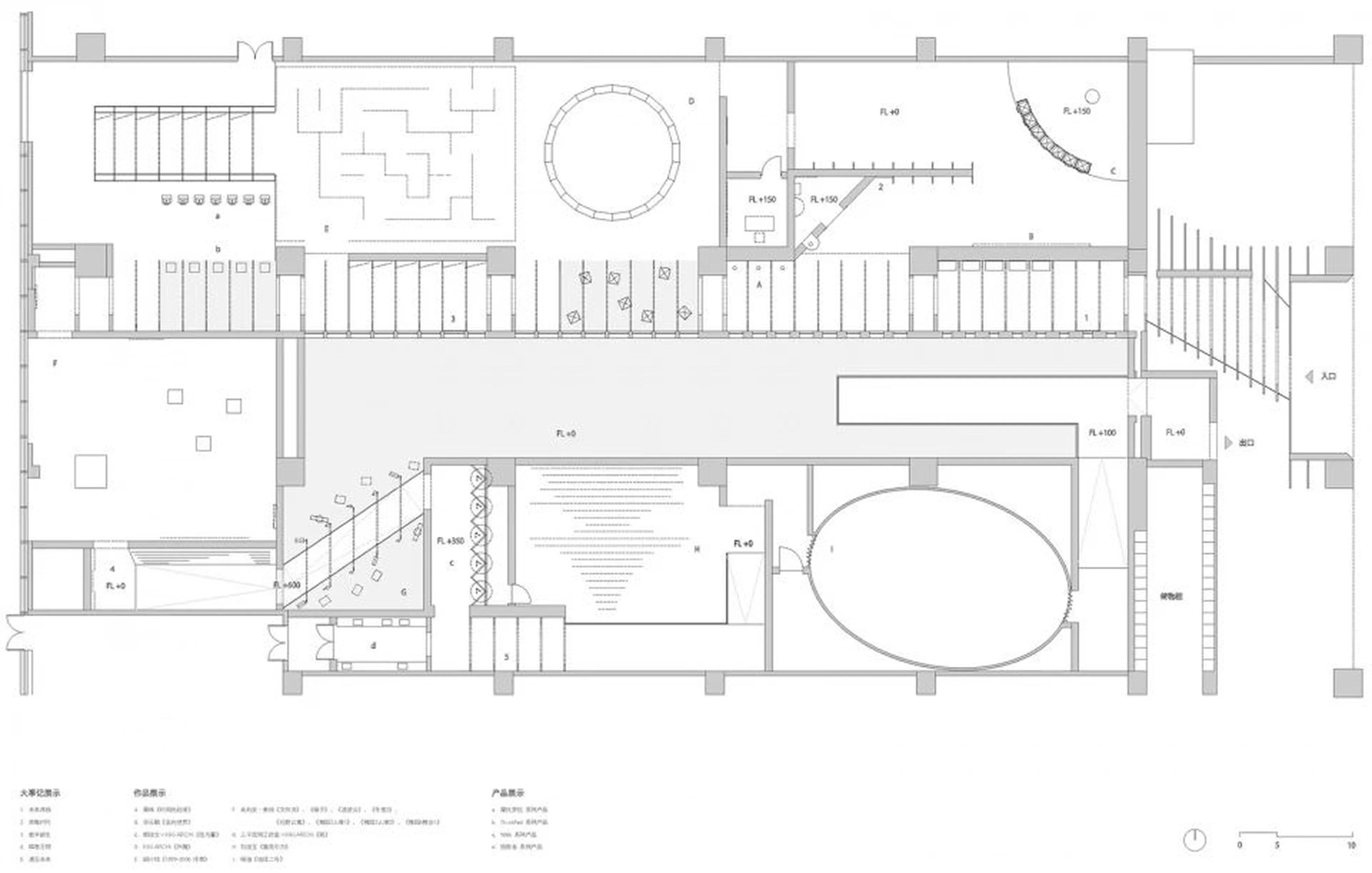This exhibition blends abstract elements with interactive displays, guiding visitors through Lenovo’s history and the future of digital art.
Contents
Project Background
The “From the Future to the Future – Digital Civilization Art Exhibition” is a collaborative endeavor between Lenovo Group and UCCA Lab, situated in Tianjin, China. Spanning 1190 square meters, the exhibition is a journey through technological exploration, narrated through five distinct chapters: “Future Overture,” “Surging Era,” “Digital Renaissance,” “Fleeting Universe,” and “Encountering the Future.” KiKi Architectural Design, under the leadership of founder and principal architect Guan Jiayan, has transformed the exhibition space into a dynamic representation of digital civilization’s evolution.
Design Concept and Objectives
The exhibition design employs a chronological narrative, mirroring a timeline of digital development. KiKi Architectural Design utilizes corridors, independent spaces, and semi-open volumes to articulate the progression of digital culture. The design cleverly internalizes the relationship between humans, electronic devices, and the surrounding environment into the spatial logic. This is achieved by referencing historical milestones to showcase the evolution of “digital information” across dimensions such as speed, scale, framework, and boundaries.
Spatial Layout and Circulation
Corridors serve as the central spine of the exhibition, acting as metaphorical “time tunnels” that connect the five chapters. As visitors transition through each chapter, the methods for absorbing information evolve alongside the narrative. Initially, historical information is presented on traditional platforms, then transitions to wall displays, acrylic boxes, suspended metal mesh, and finally, ethereal gauze. This shift in materiality reflects the gradual dematerialization of information’s framework and the increasing lightness of its mediums.
Exhibition Highlights
Independent spaces punctuate the exhibition, each housing art installations that resonate with the respective chapter’s historical context, alongside displays of Lenovo’s product evolution. The presentation of Lenovo’s products is thoughtfully derived from their unique characteristics. For instance, the “M” letter projection zone evokes the iconic Motorola mobile phone, red pillars symbolize the classic ThinkPad red dot, colored mirrors capture the youthful spirit of the YOGA dual-screen laptop, and a dark display wall inspired by keyboards pays homage to the “Savior” gaming laptop series.
Windows as Metaphors and Visual Connections
Throughout the exhibition, strategically placed “windows” on the walls create visual intersections, acting as dynamic frames capturing scenes and figures from different chapters of the digital timeline. These windows allow visitors to reflect on the past and glimpse into the future, acknowledging humanity’s contributions and achievements within digital civilization. In the final chapter, “Dock,” windows become a central design element. KiKi Architectural Design proposes that the screens of electronic devices are akin to architectural windows; their size and aperture reflect humanity’s evolving technological capabilities and perspectives, forecasting the continuous innovation of boundaries and relationships.
Art Installations: Bridging the Known and Unknown
Beyond the exhibition’s architectural design, Guan Jiayan also contributes to the creation of several art installations. These installations serve as integral exhibition content, spatial elements, and interactive components, utilizing Lenovo products from various eras alongside artworks to chronicle the known and unknown facets of digital civilization. Notably, “Flow and Volume” by Guo Ruiwen and Guan Jiayan uses CRT monitors to showcase the digital shift in the 1990s, while “Ascension” by Guan Jiayan utilizes a spiral structure to depict Lenovo’s brand journey. “Rain” by Guan Jiayan and 3000 Lumen Studio employs a dark space and video projections to explore the blurred boundaries in the age of the internet.
Conclusion
The “From the Future to the Future” exhibition transcends a mere showcase of technological advancements. It delves into the profound impact of digital culture on human civilization, inviting visitors to ponder the past, present, and future of our increasingly intertwined relationship with technology. Through the clever use of architectural elements and interactive installations, KiKi Architectural Design successfully creates an immersive and thought-provoking experience that leaves a lasting impression on visitors.
Project Information:
Project Type: Exhibition Space
Architect: KiKi Architectural Design
Principal Architect: Guan Jiayan
Area: 1190 ㎡
Project Year: 2023
Country: China
Photographer: Ruijing Photography


